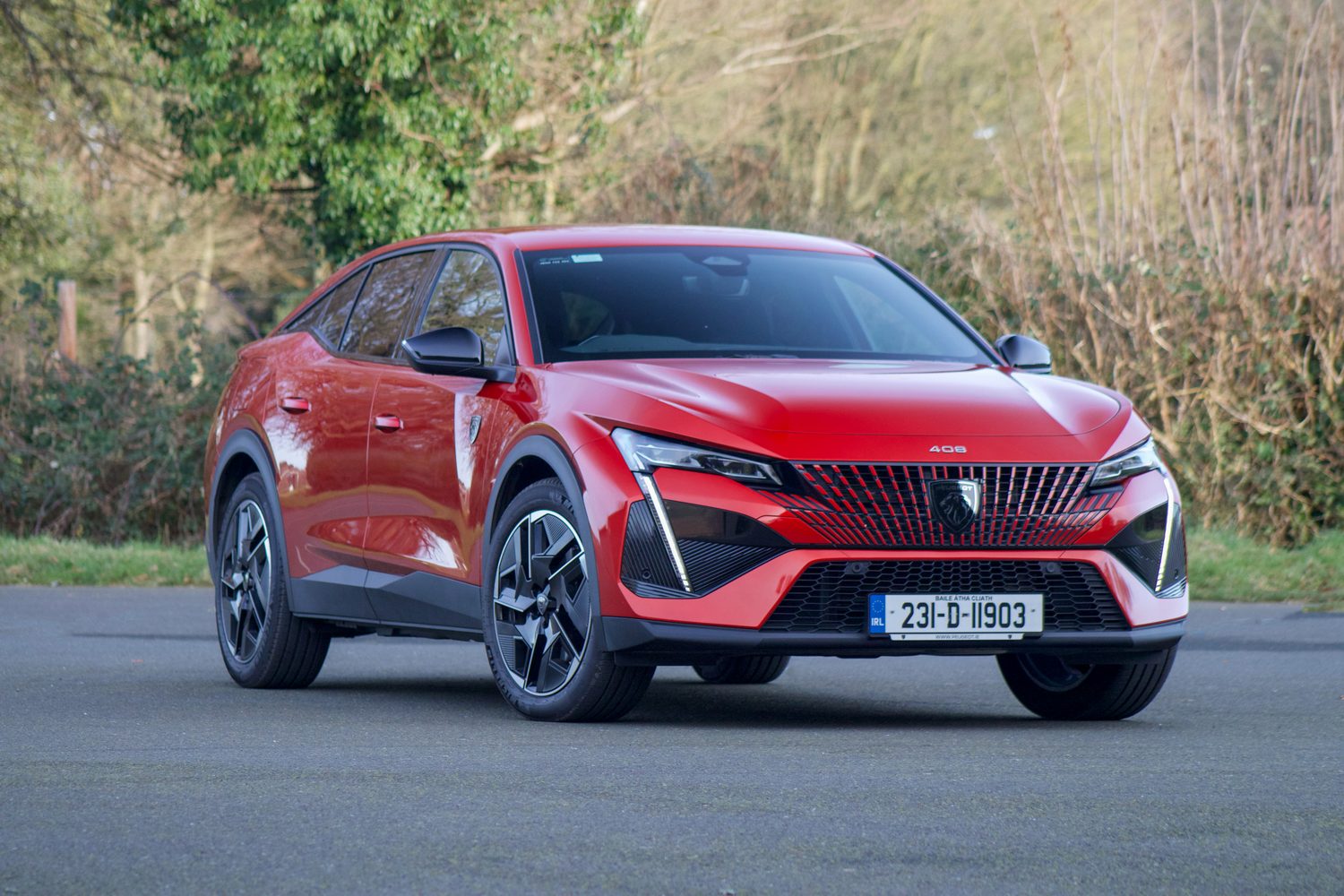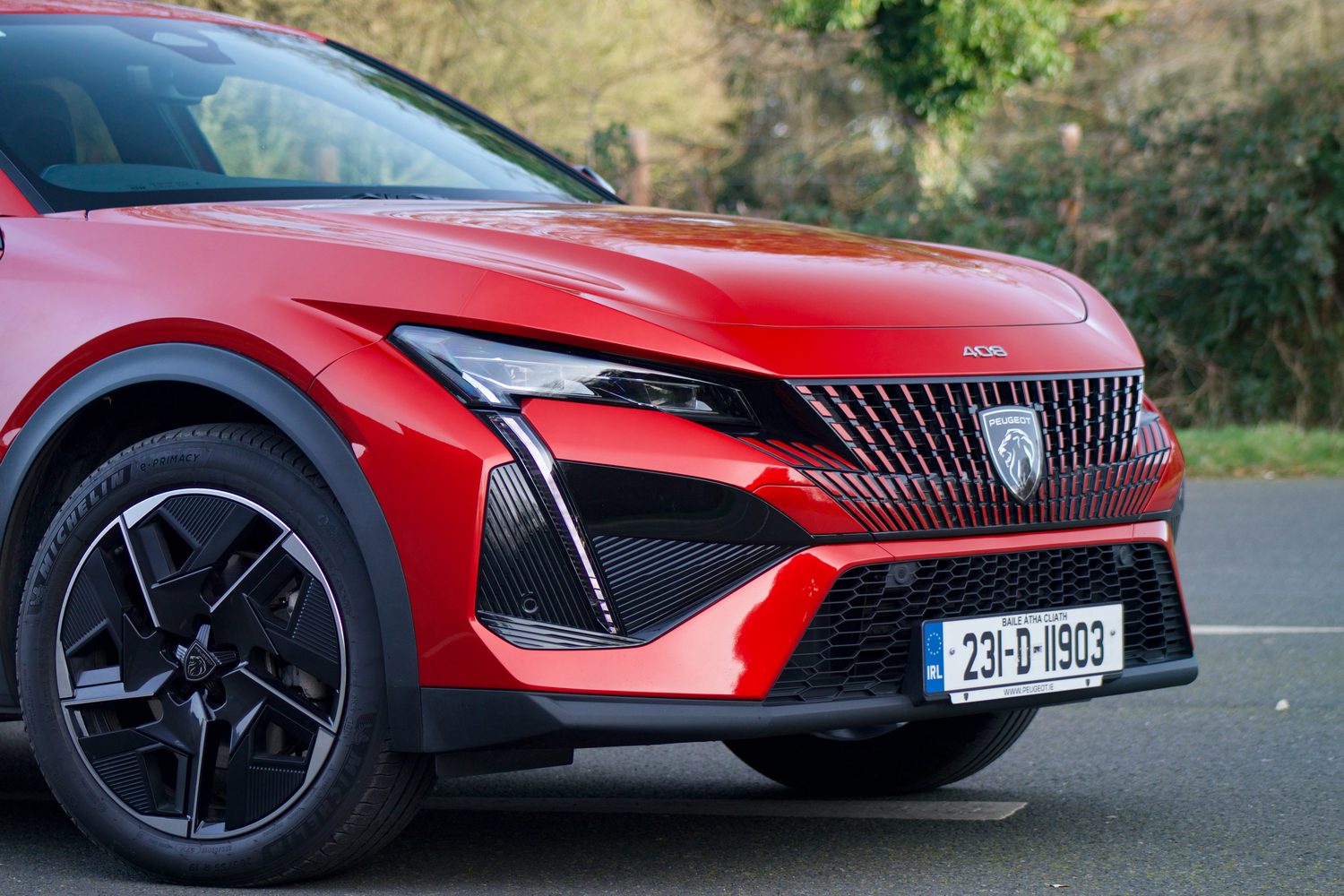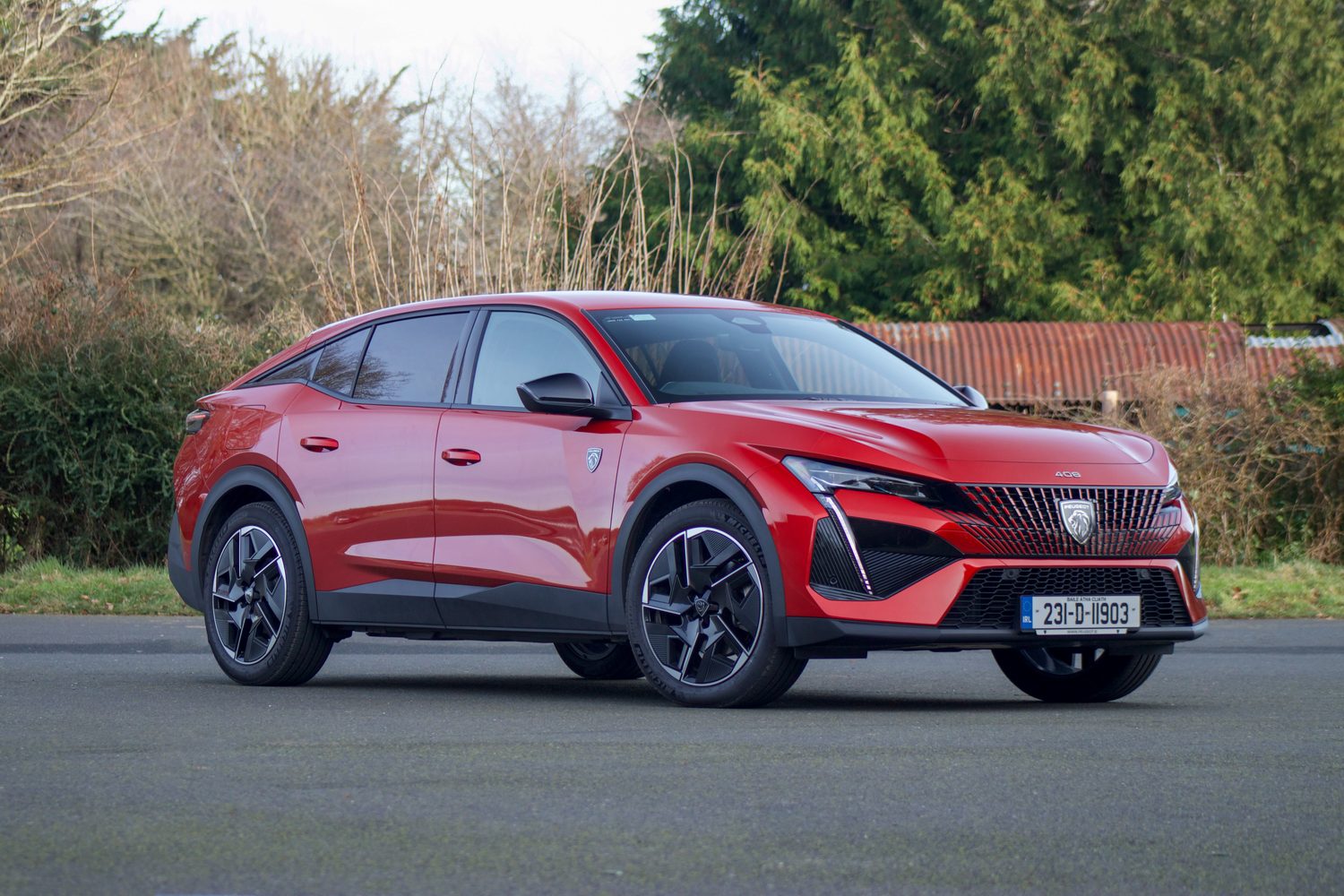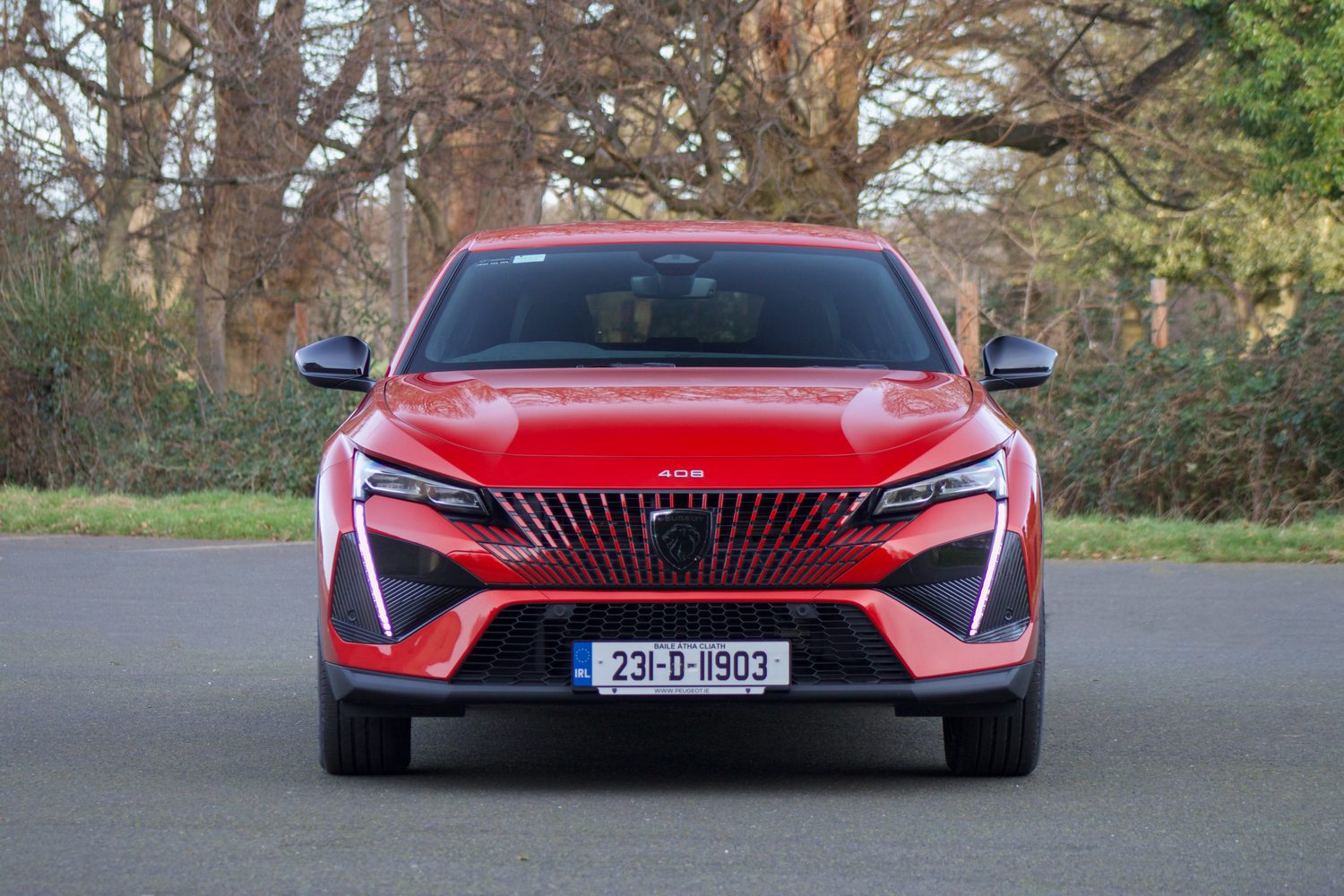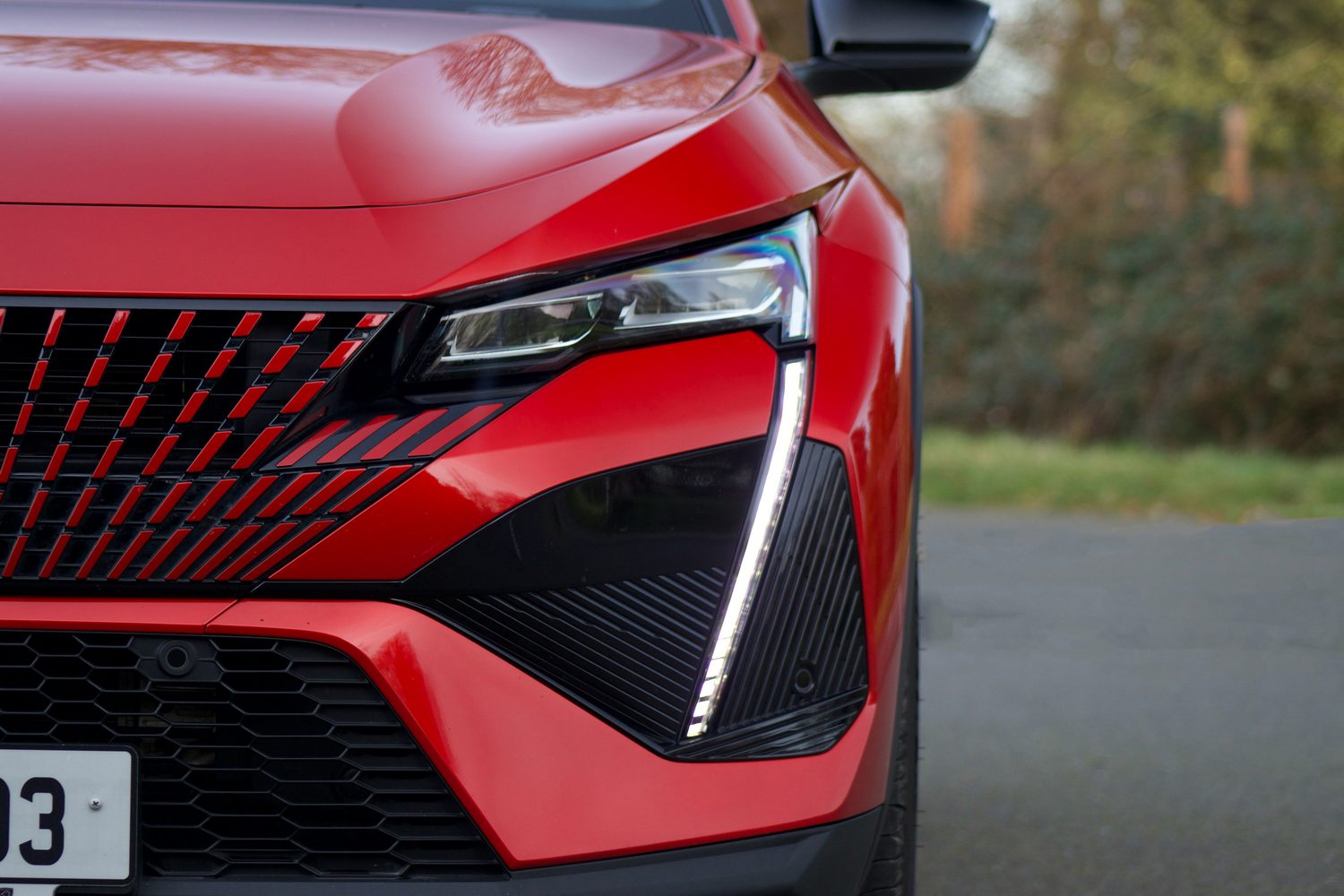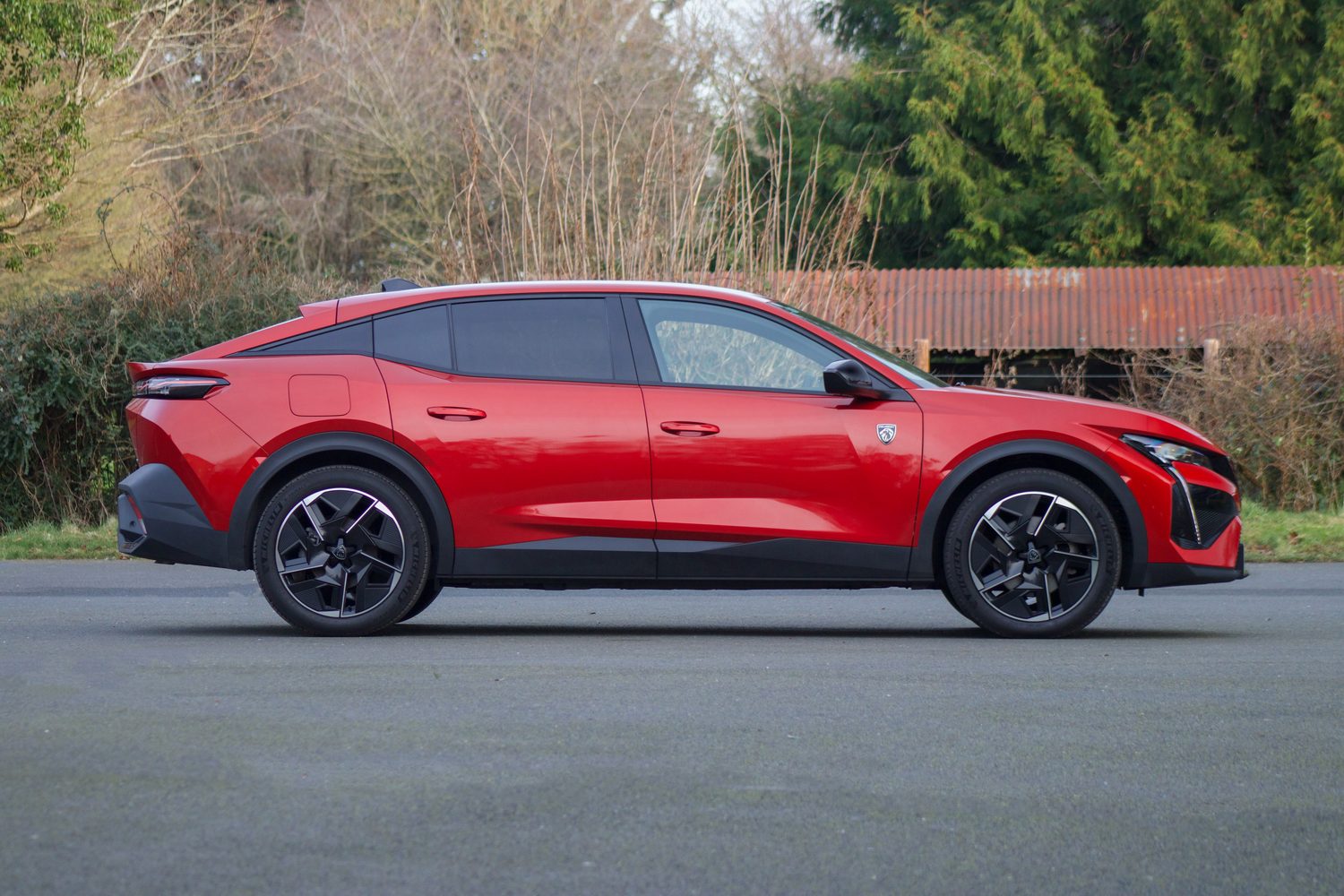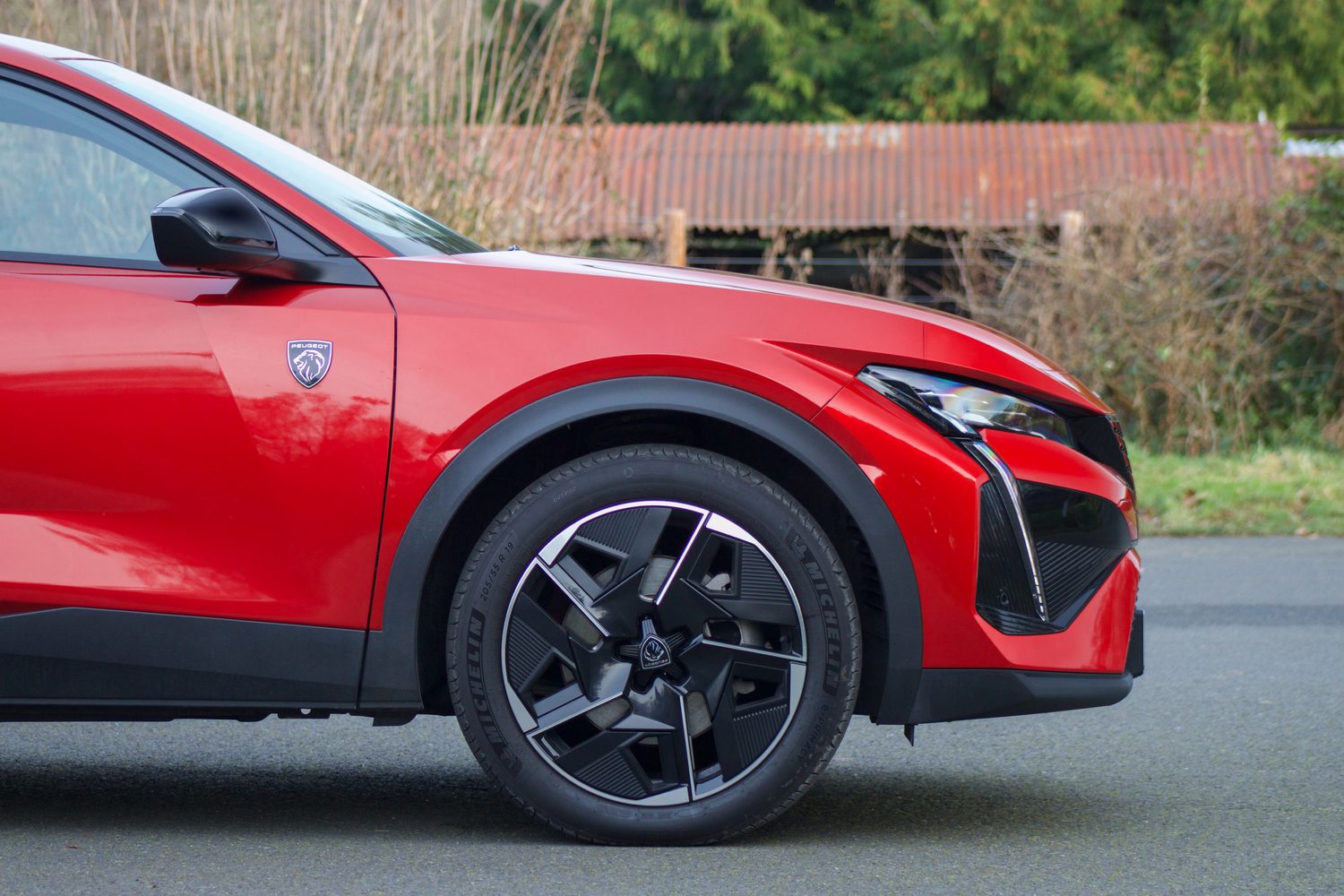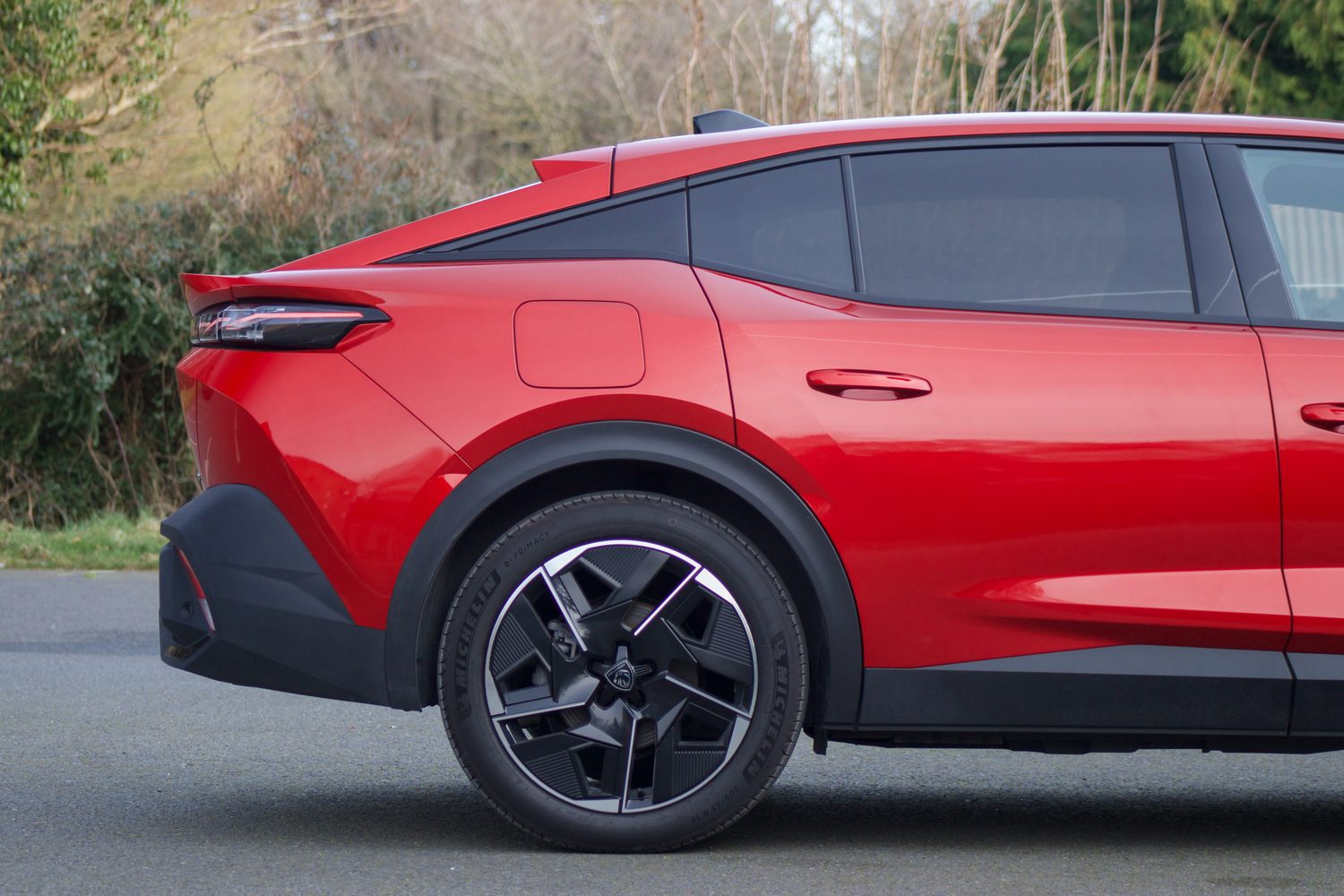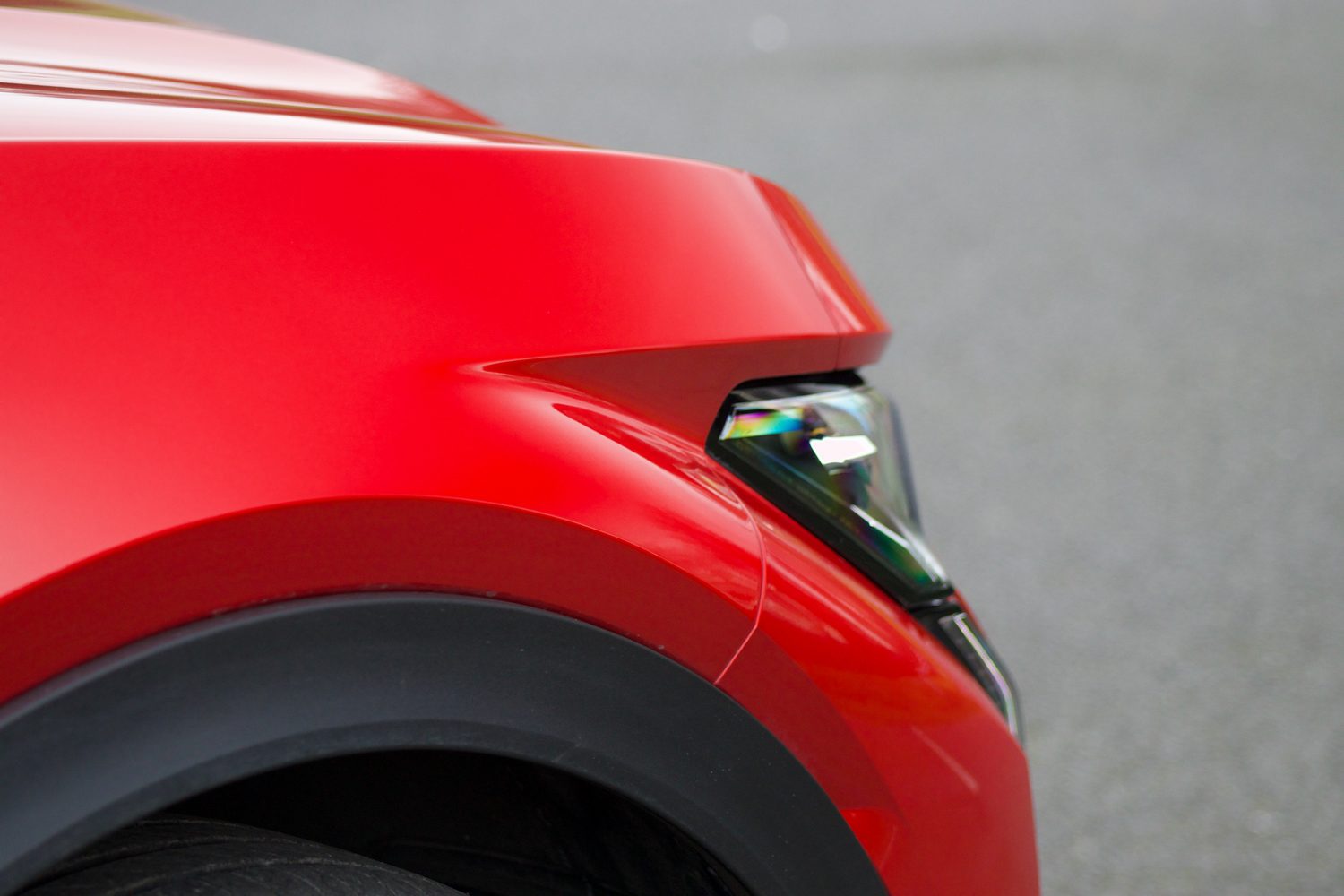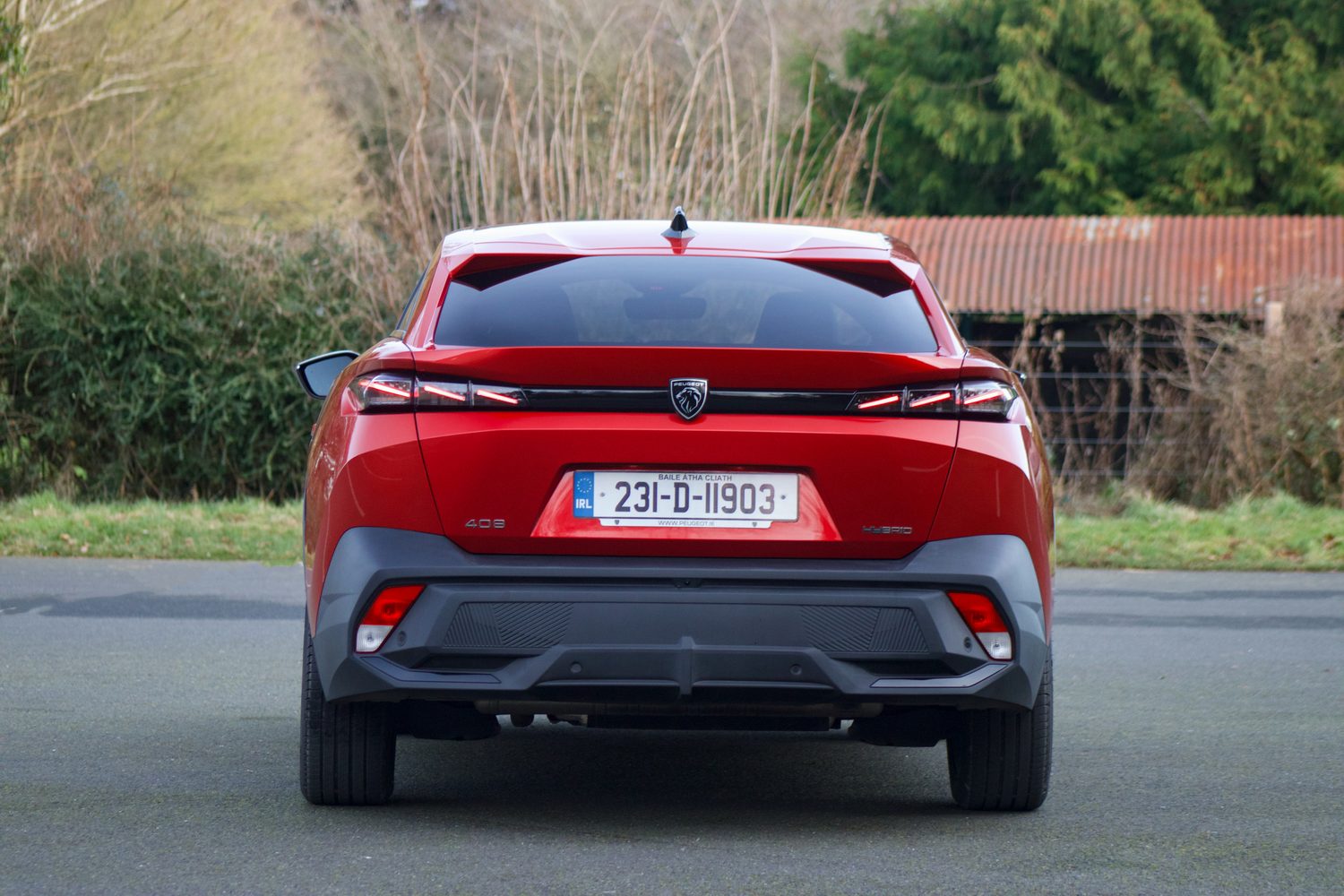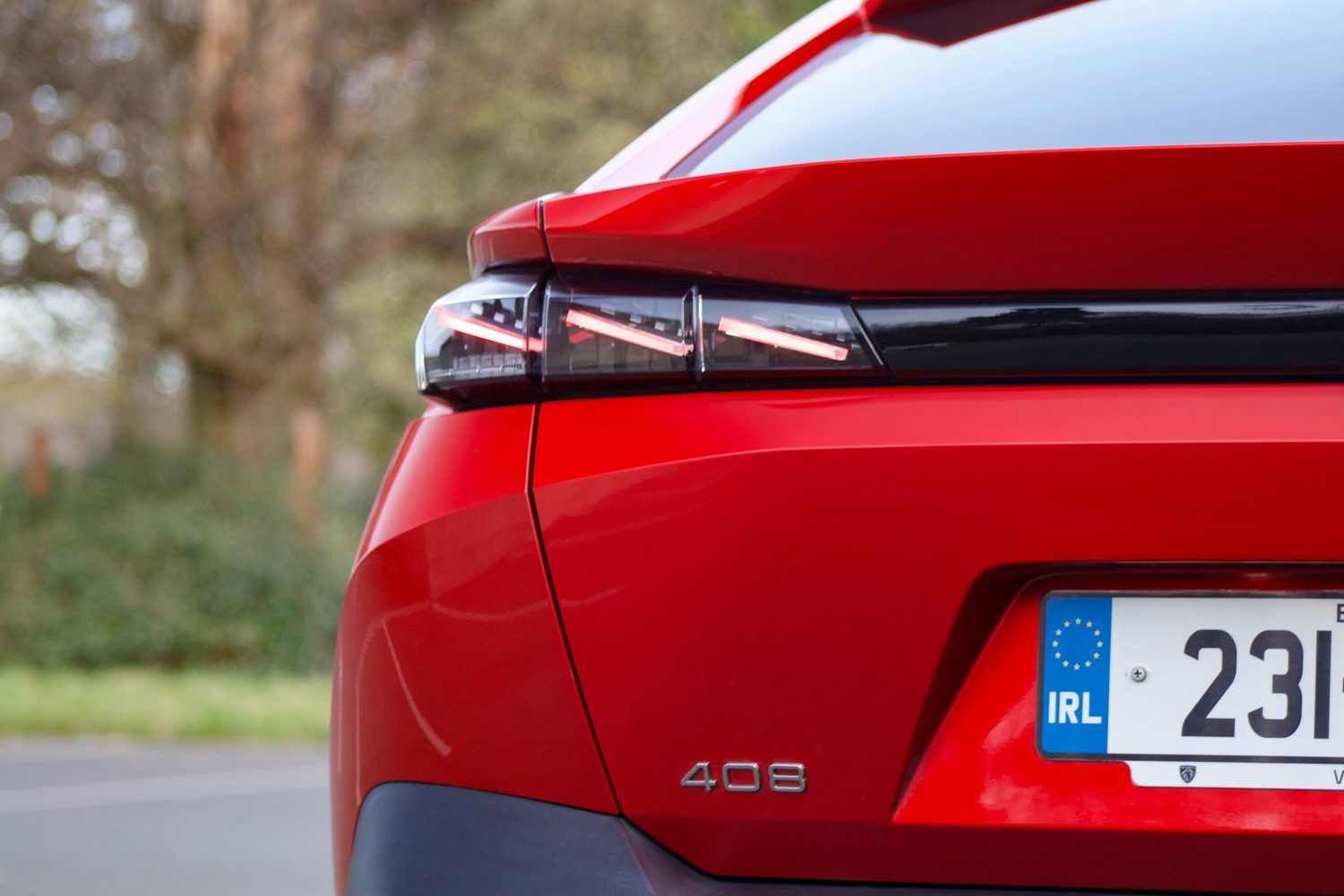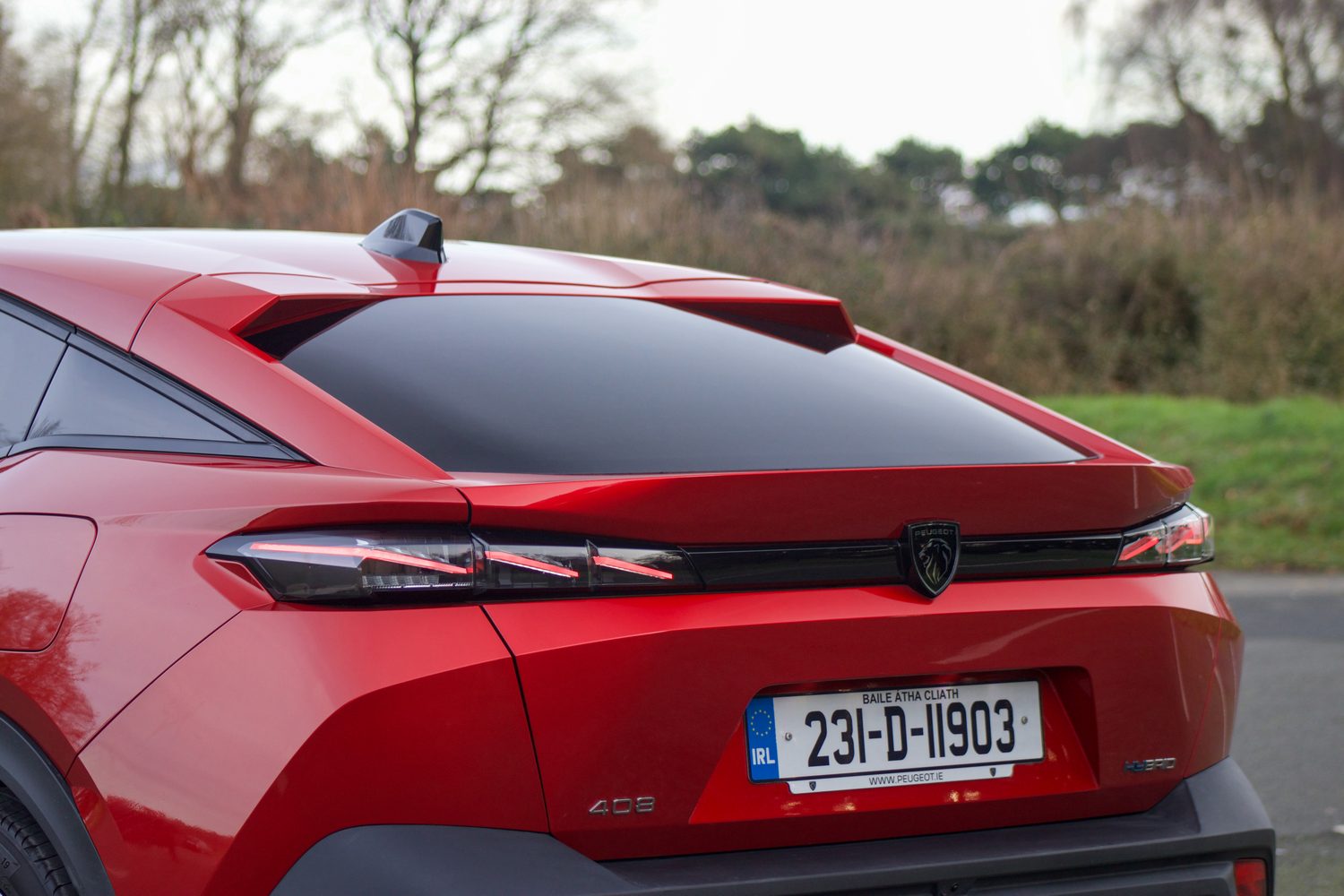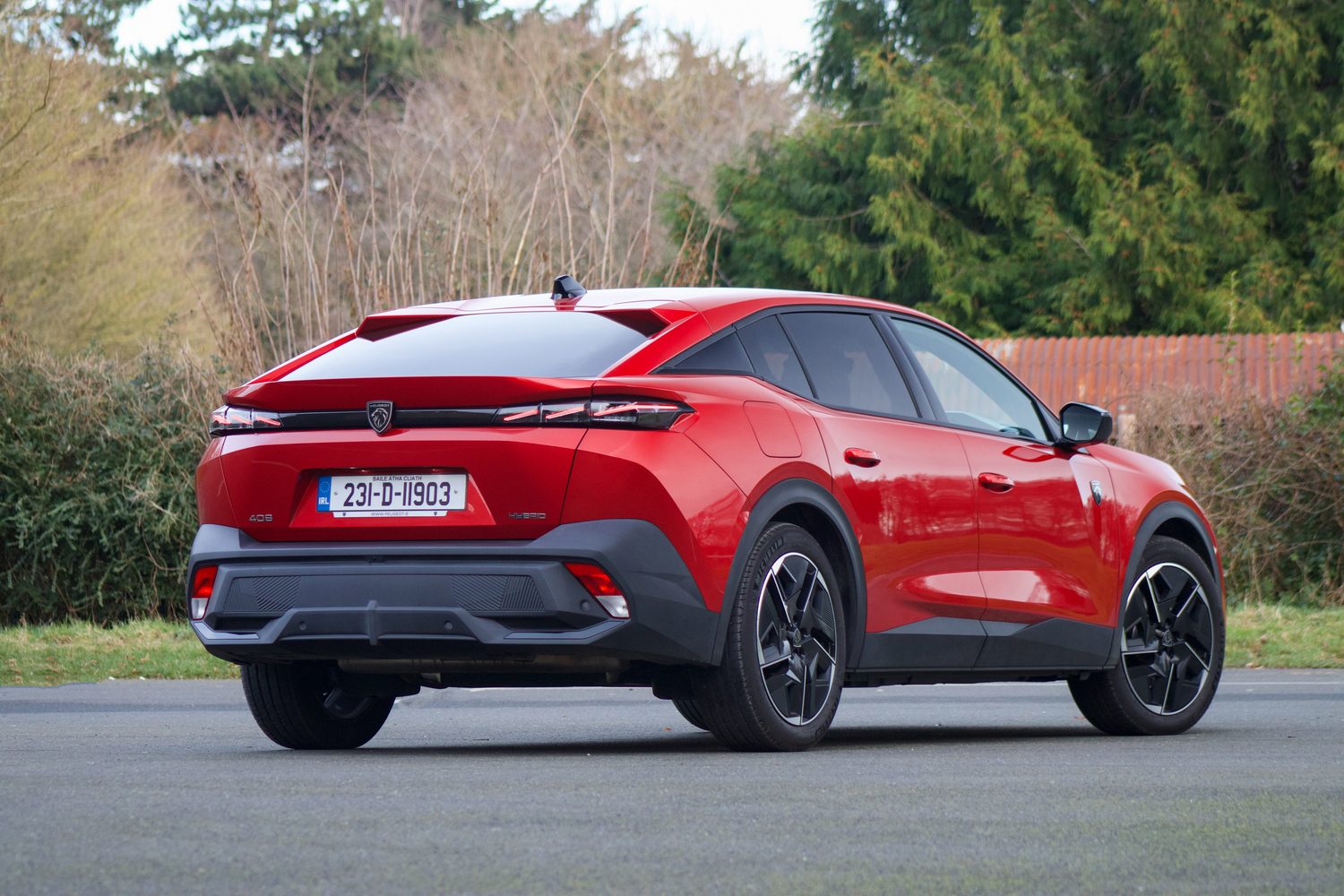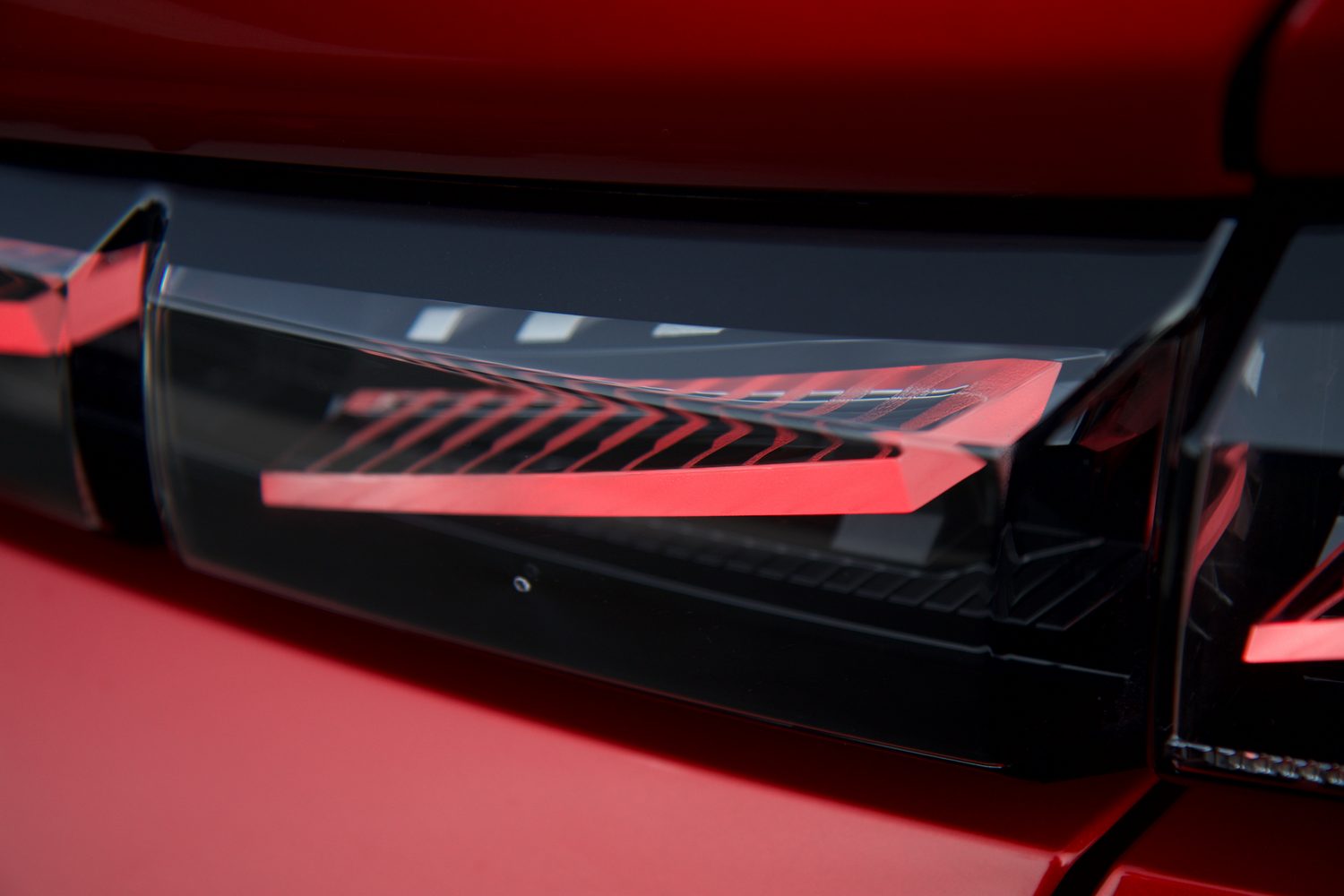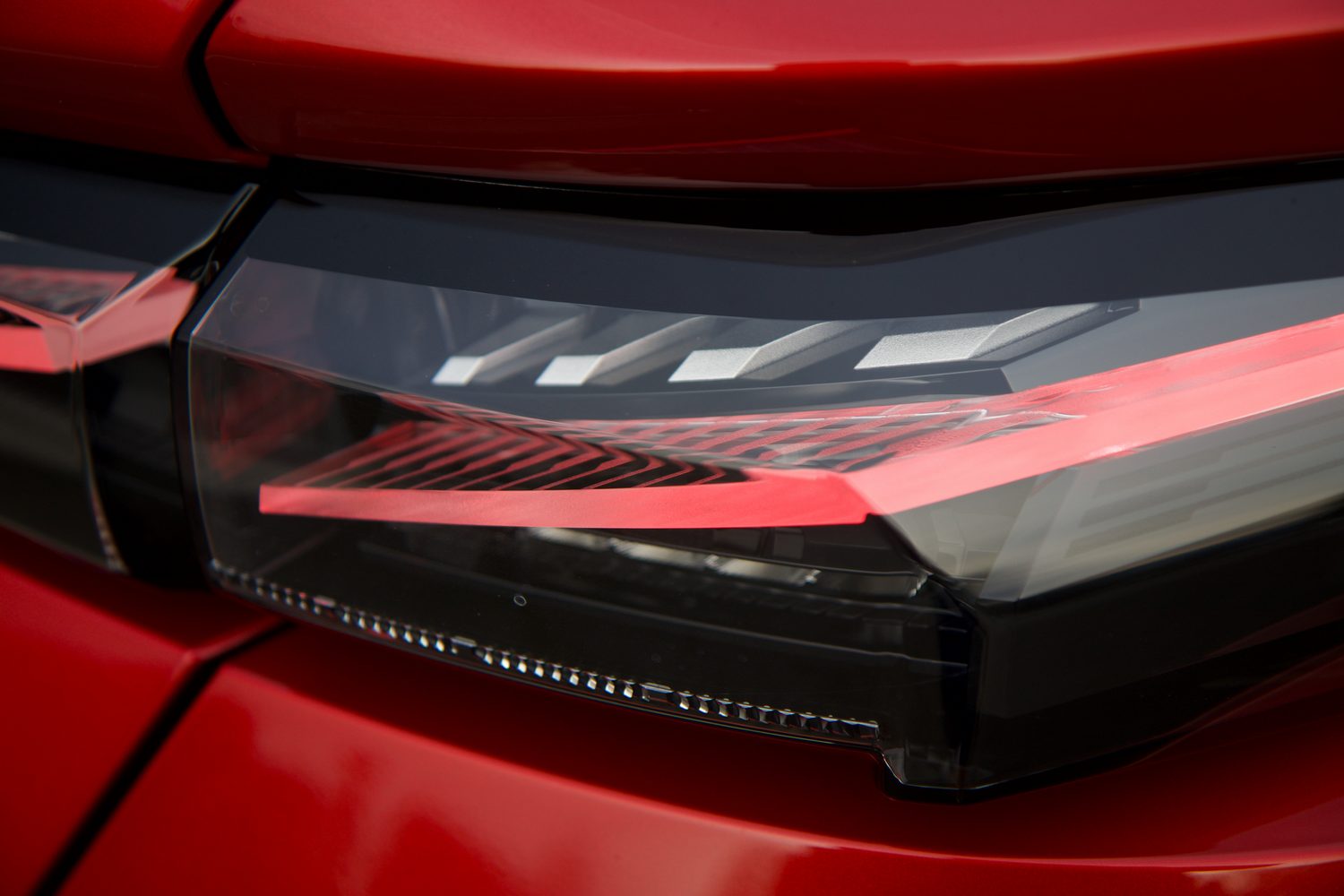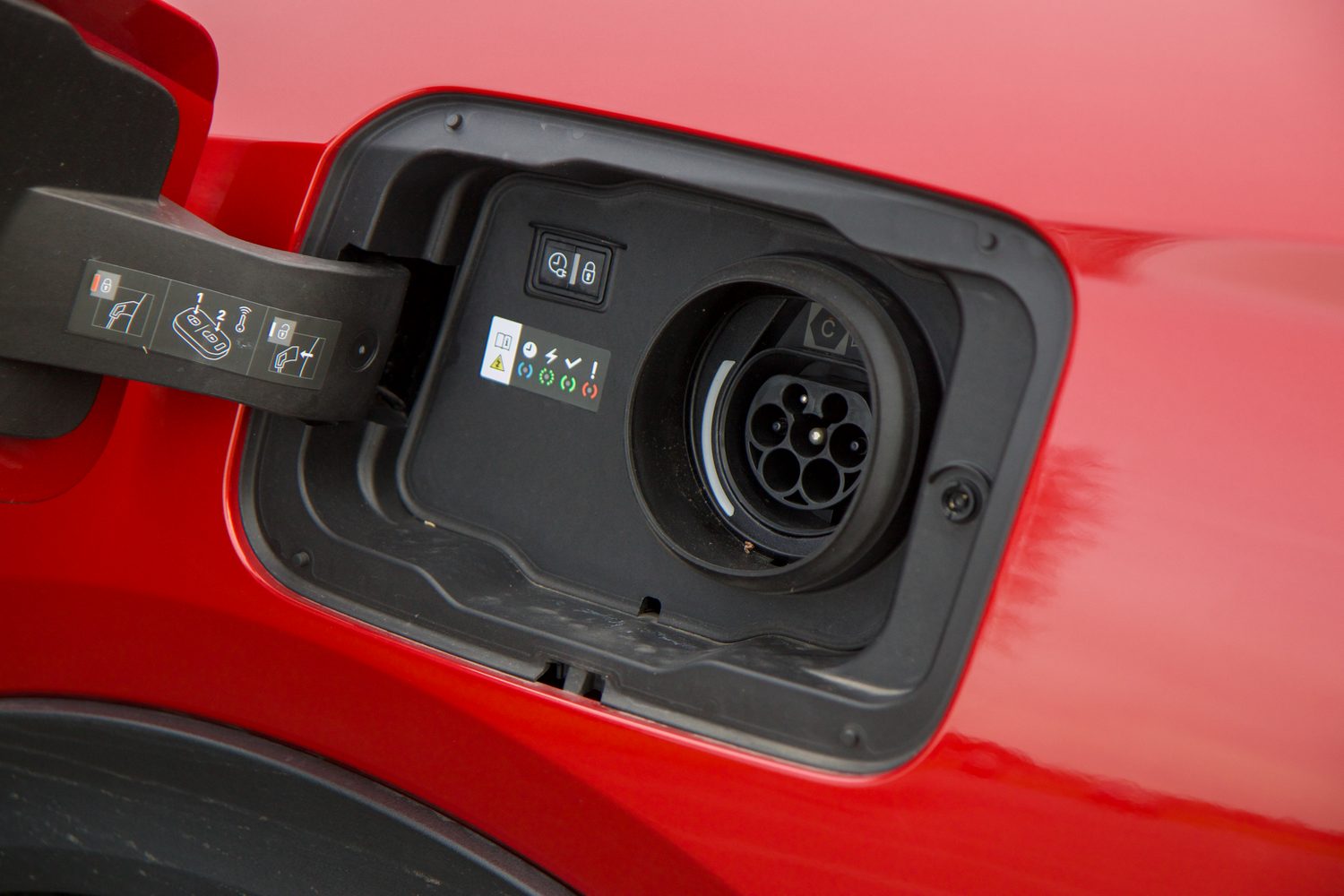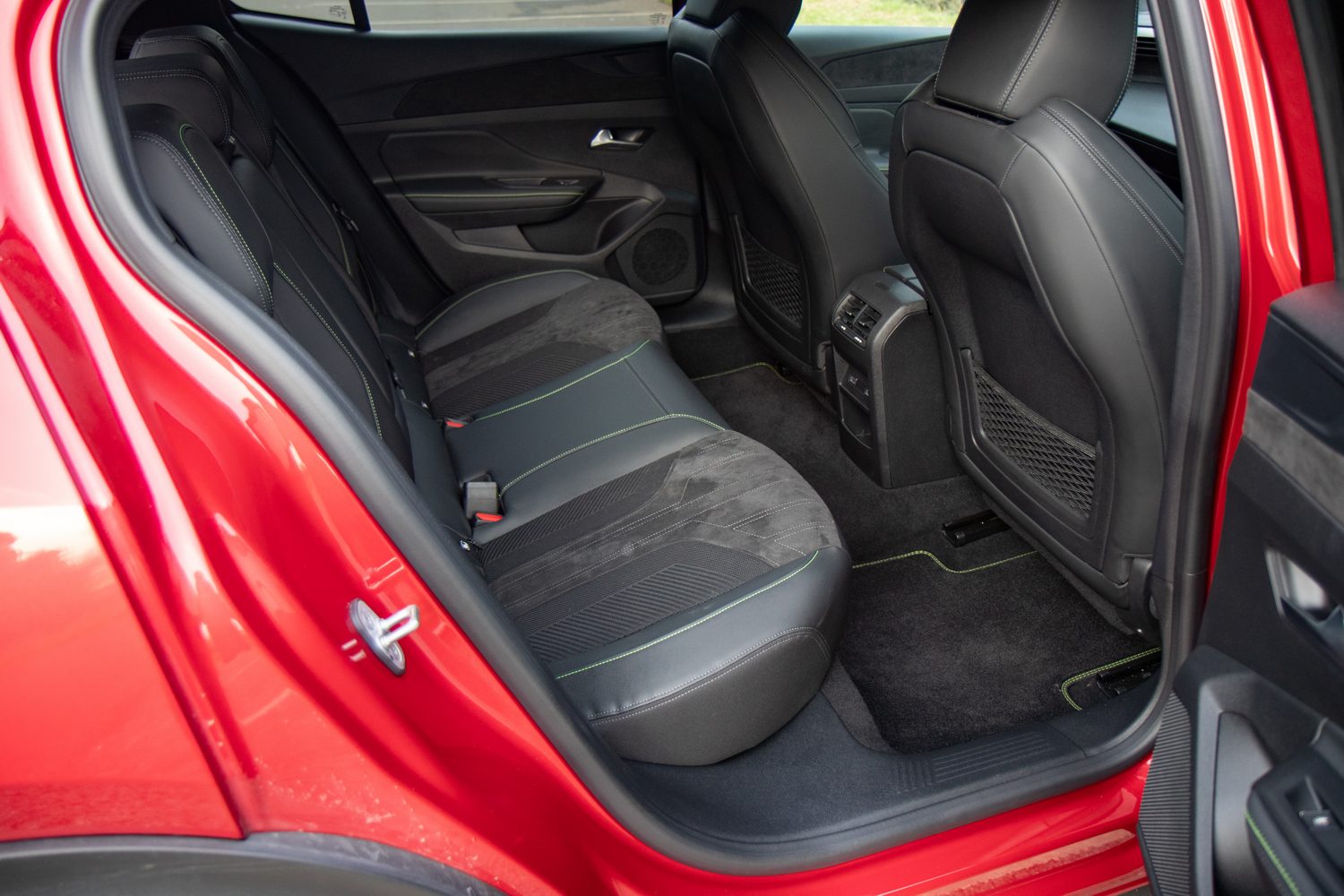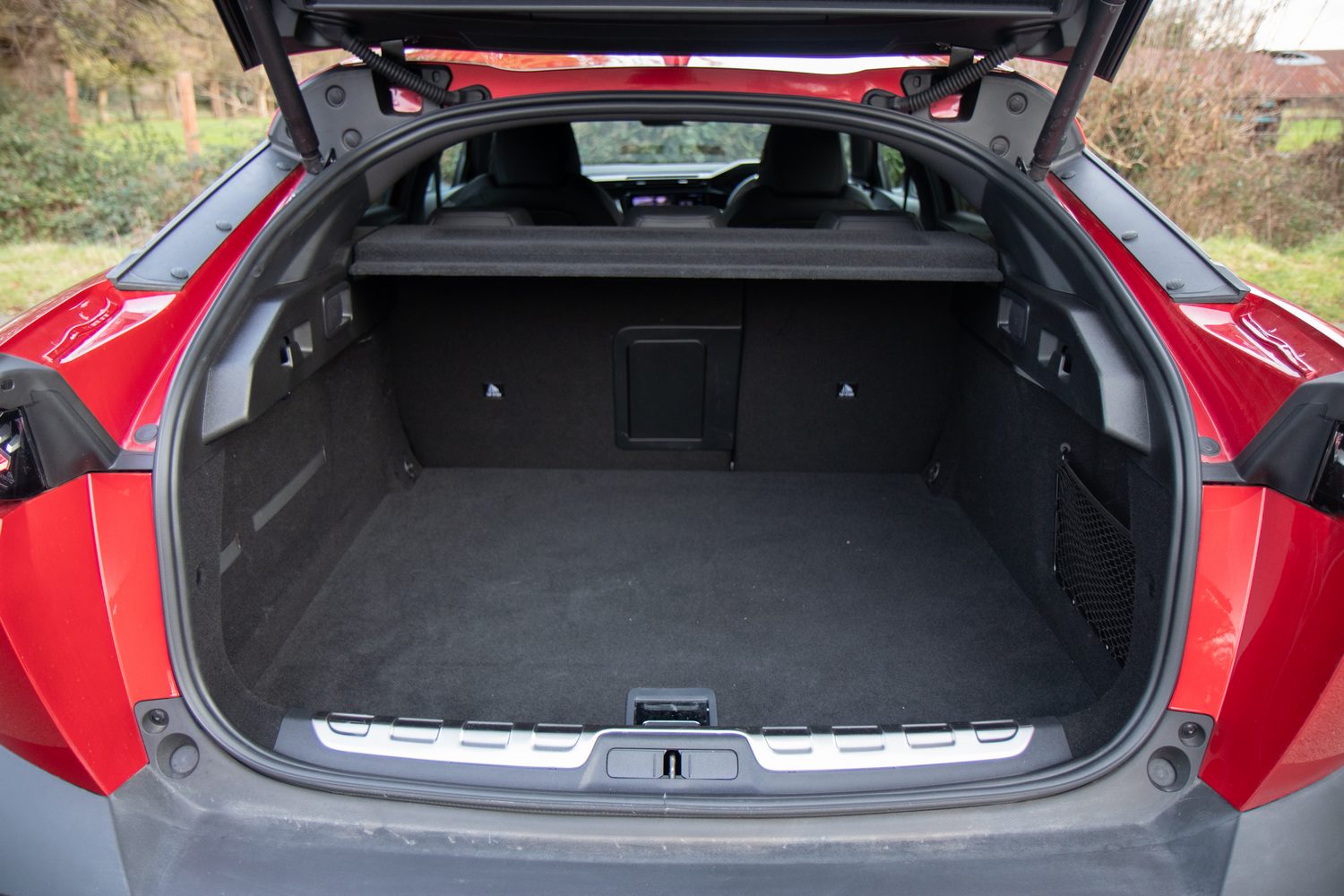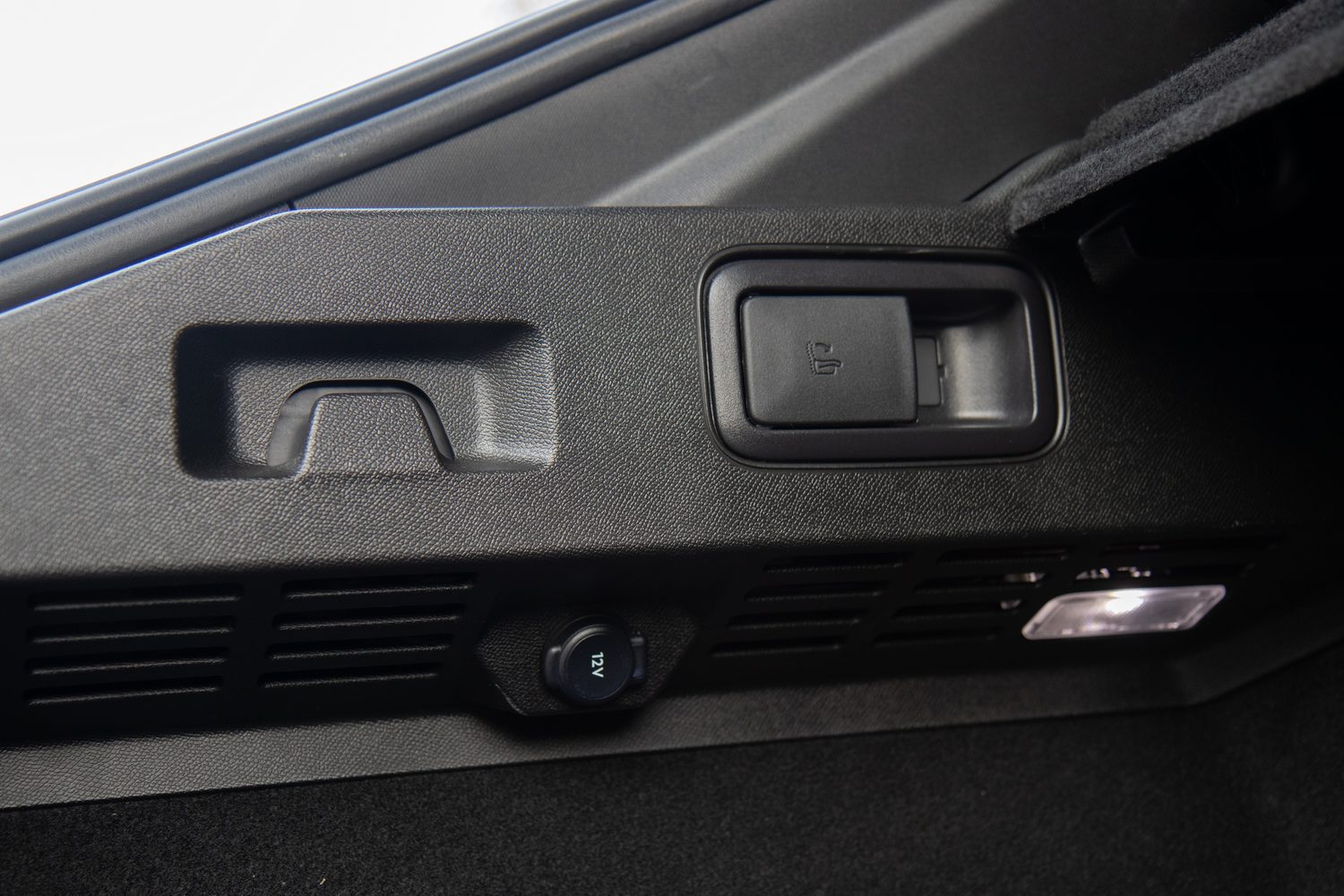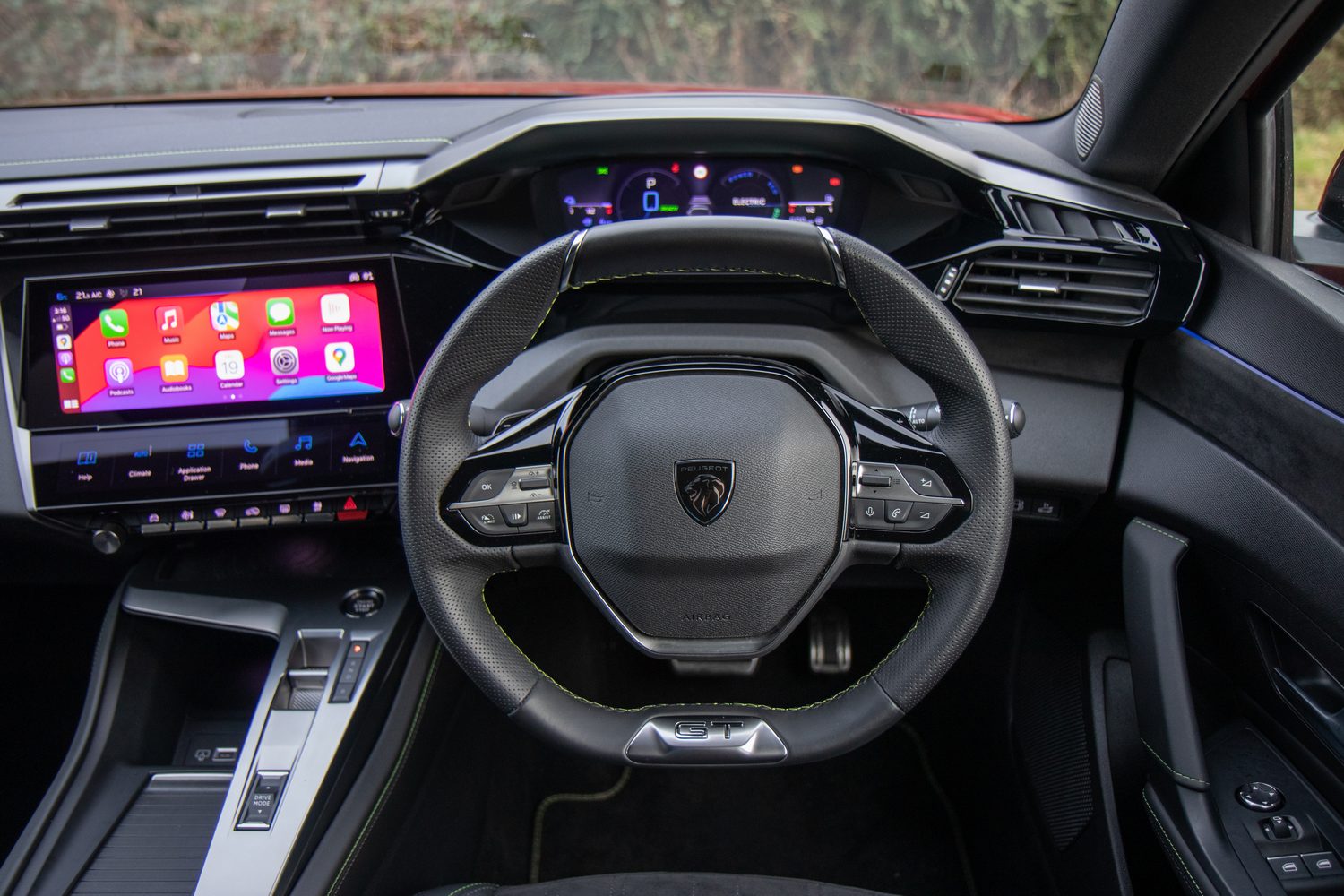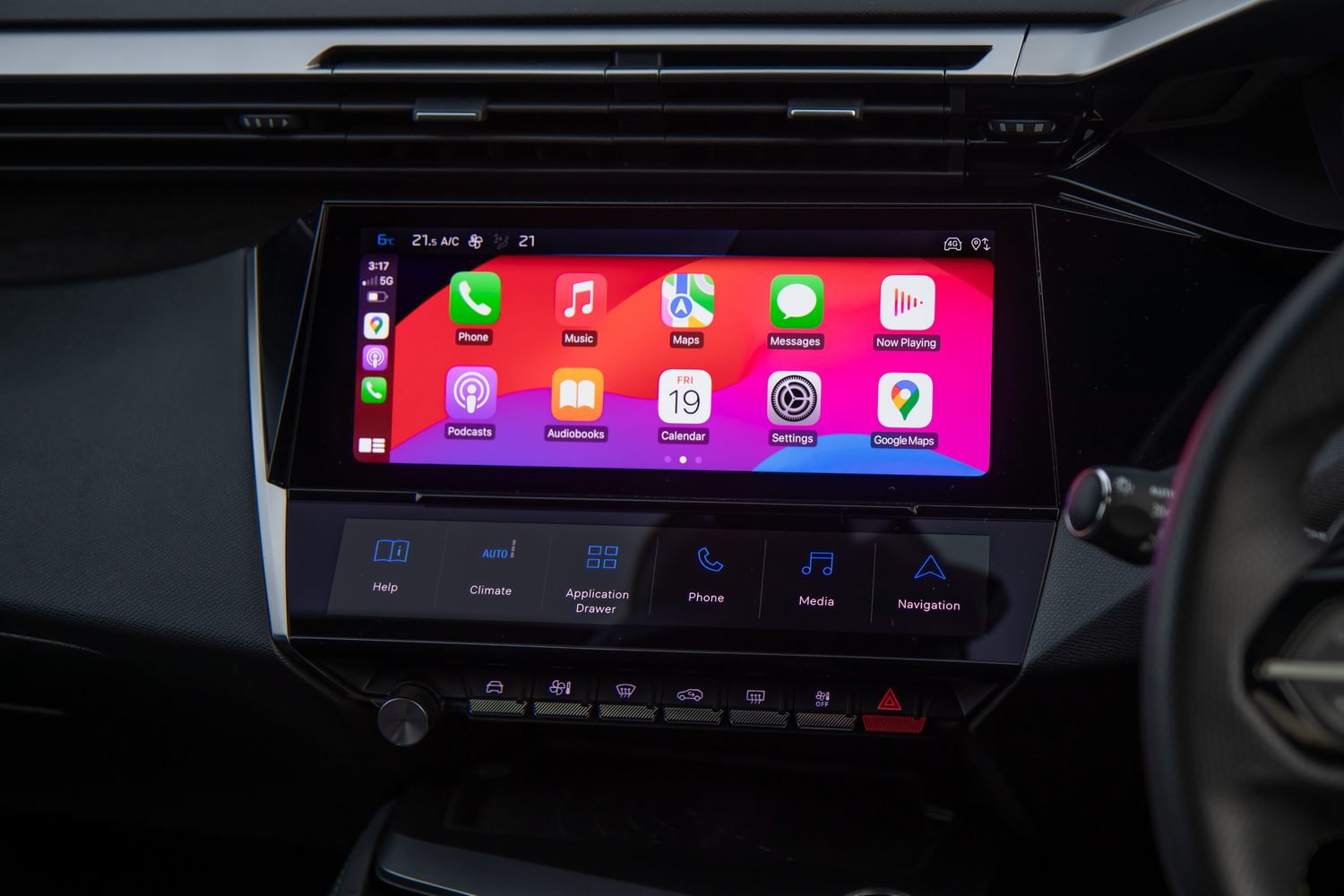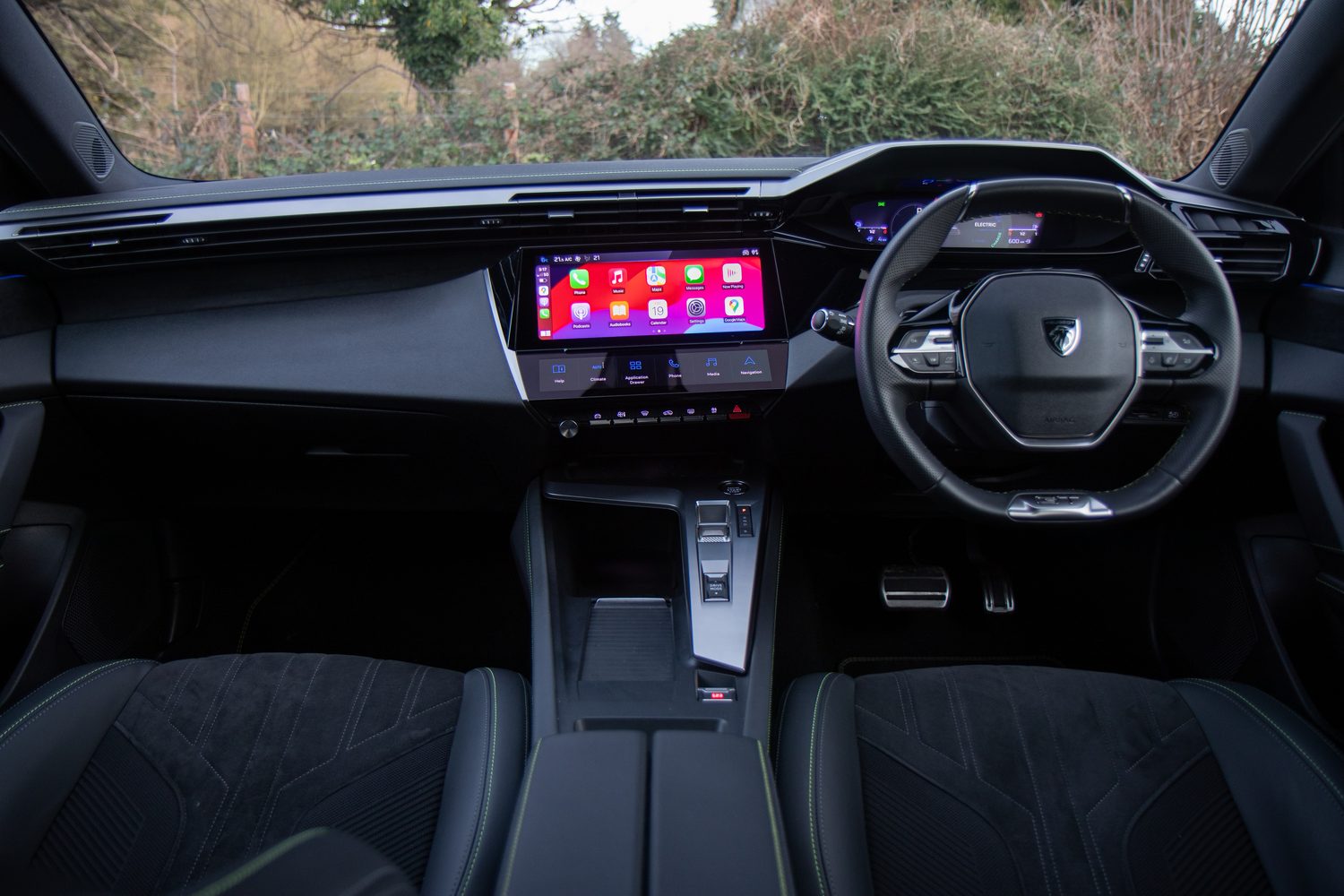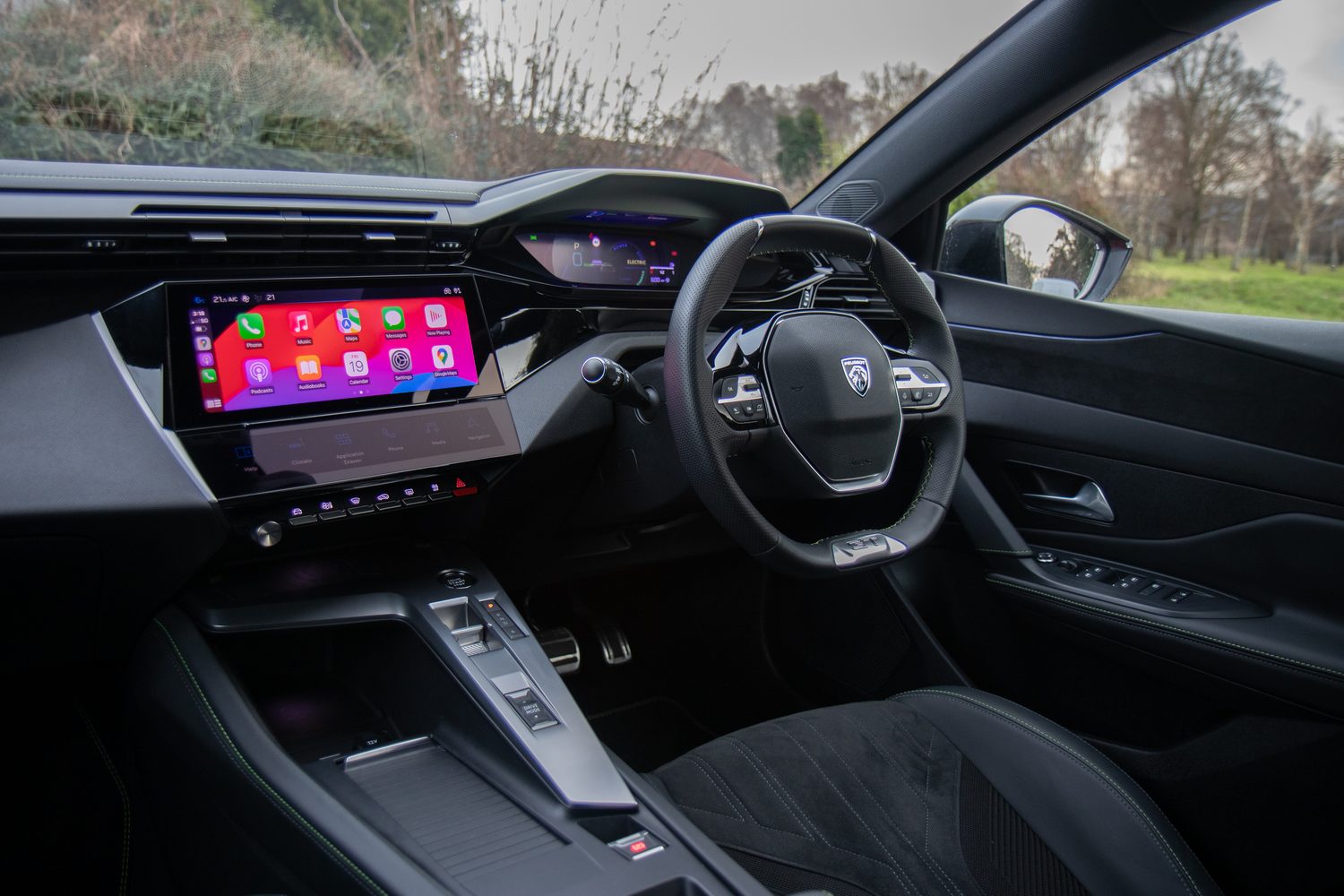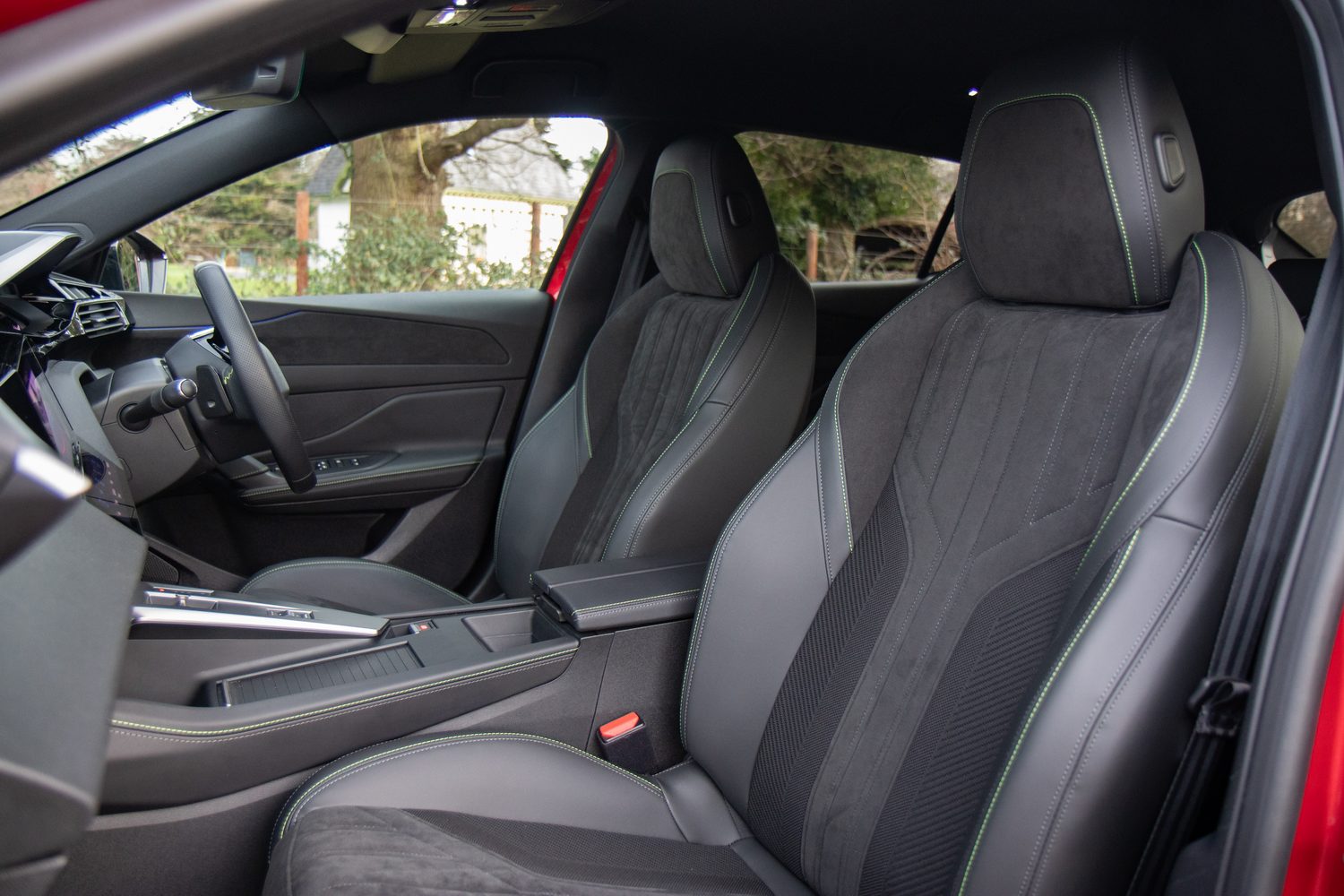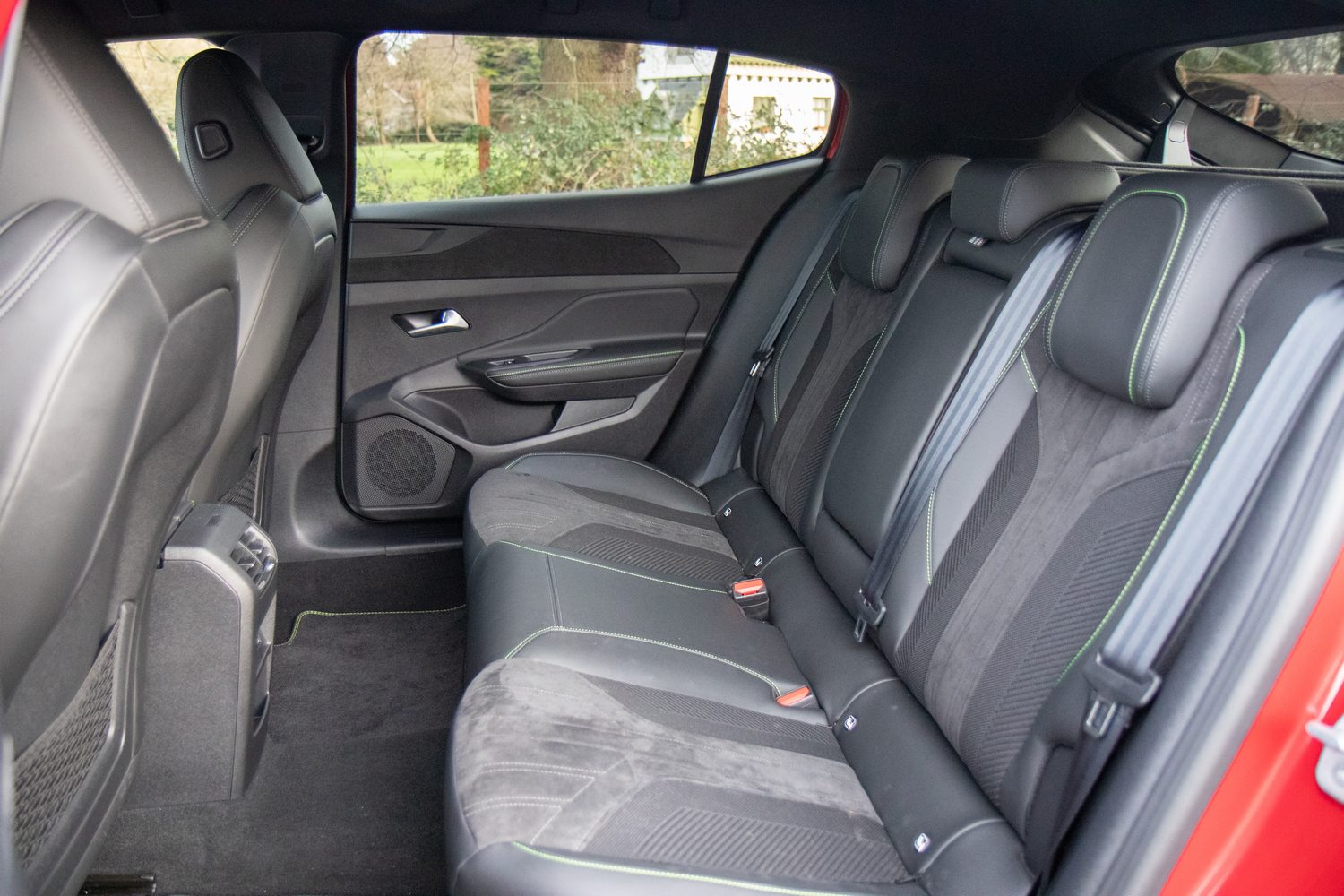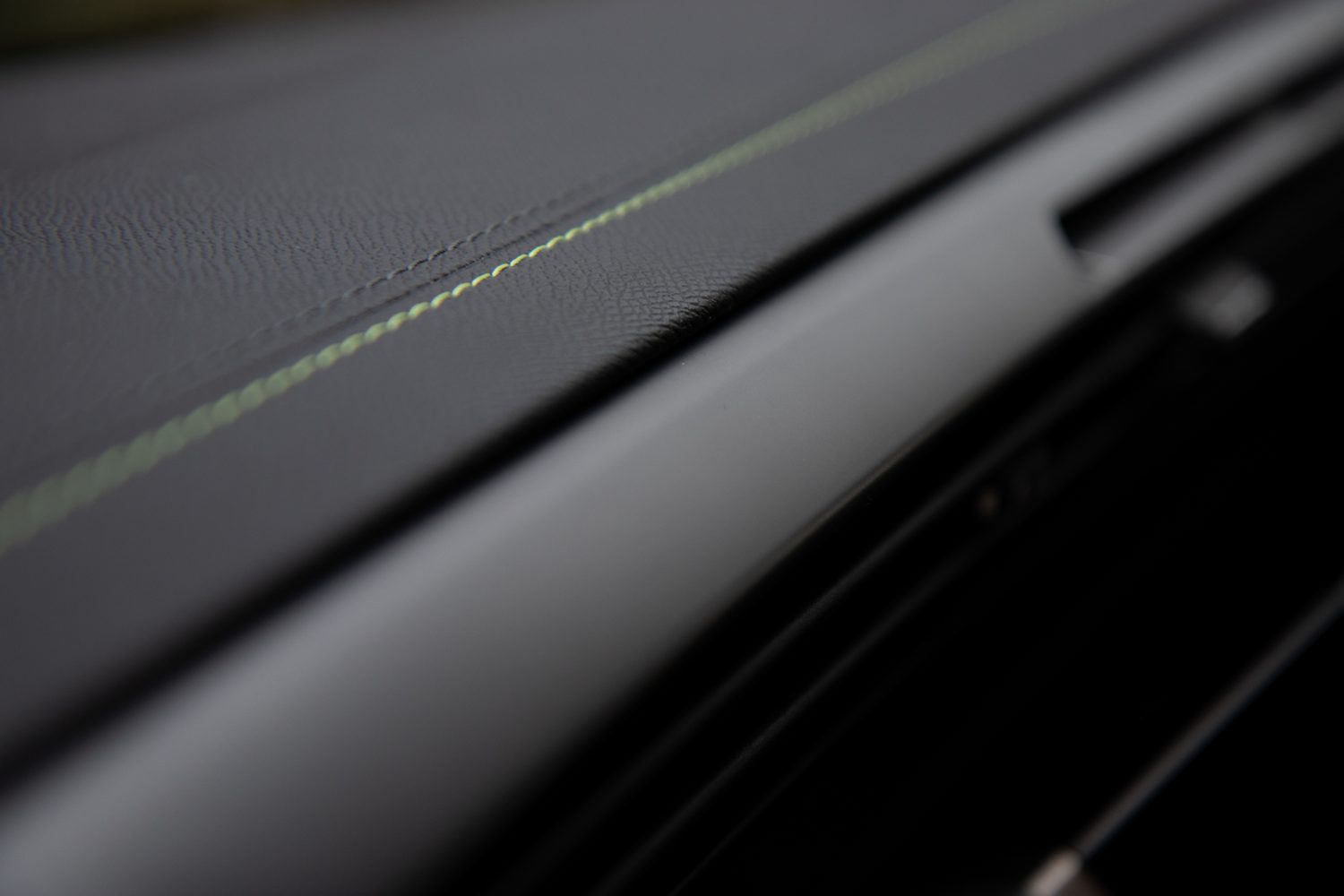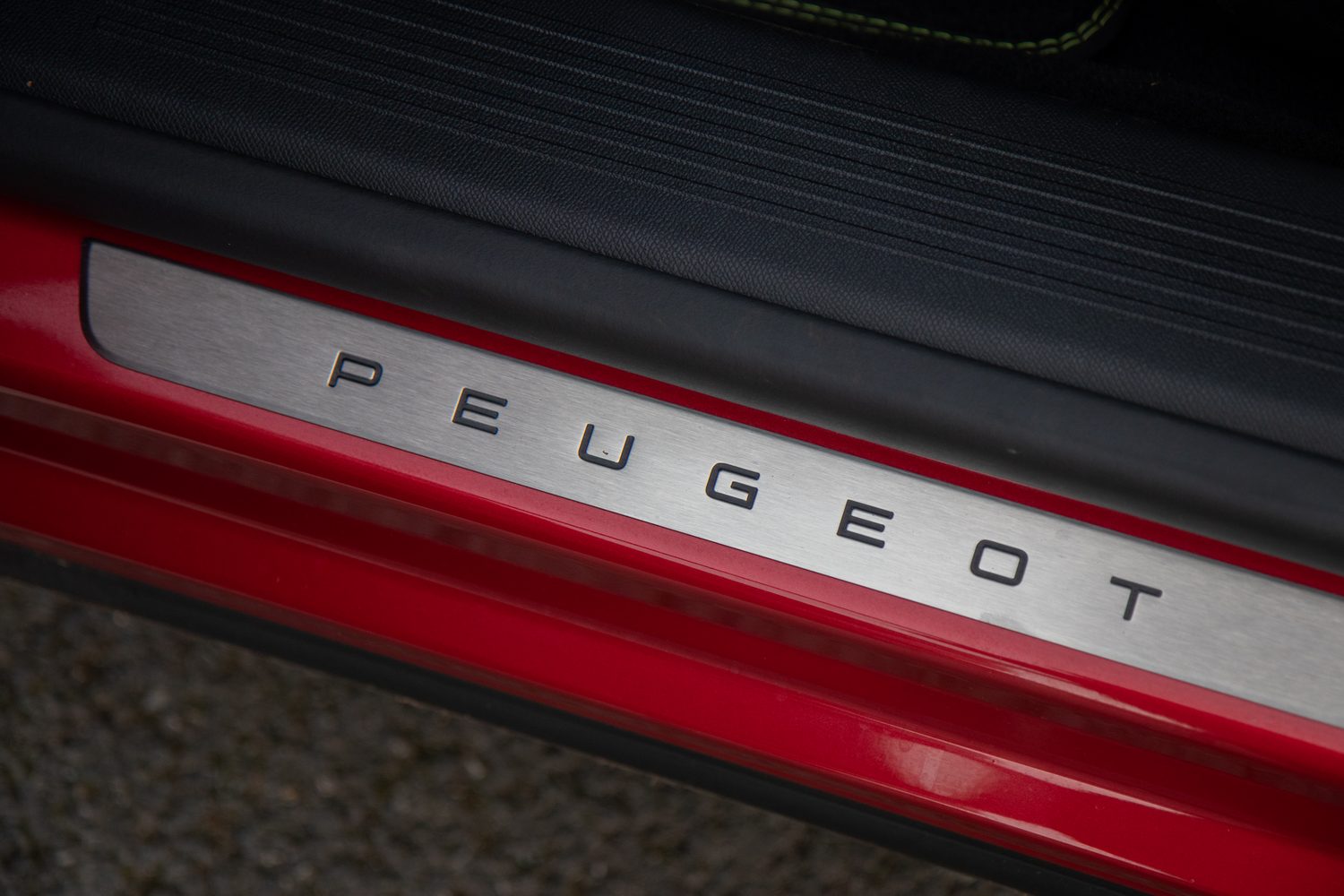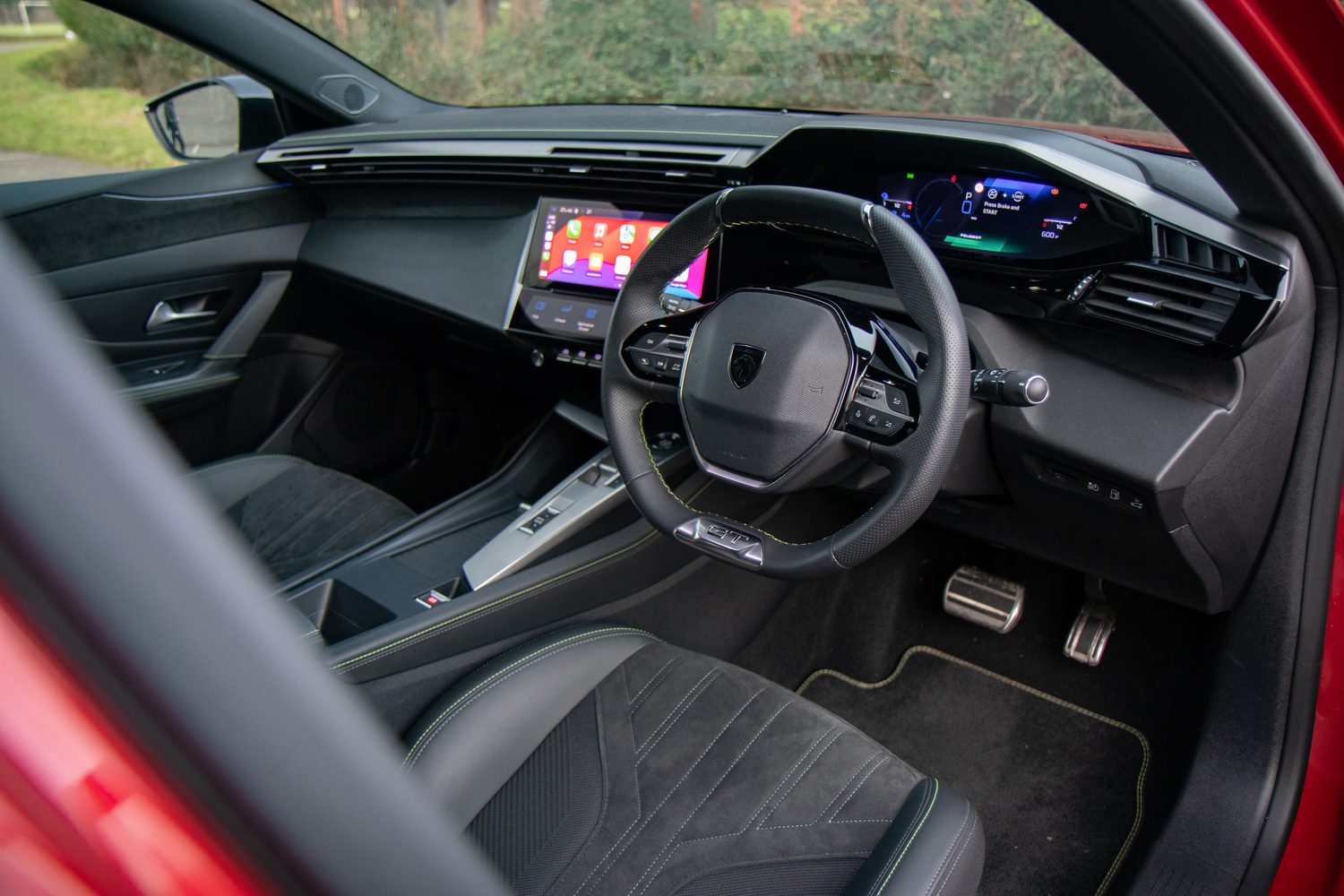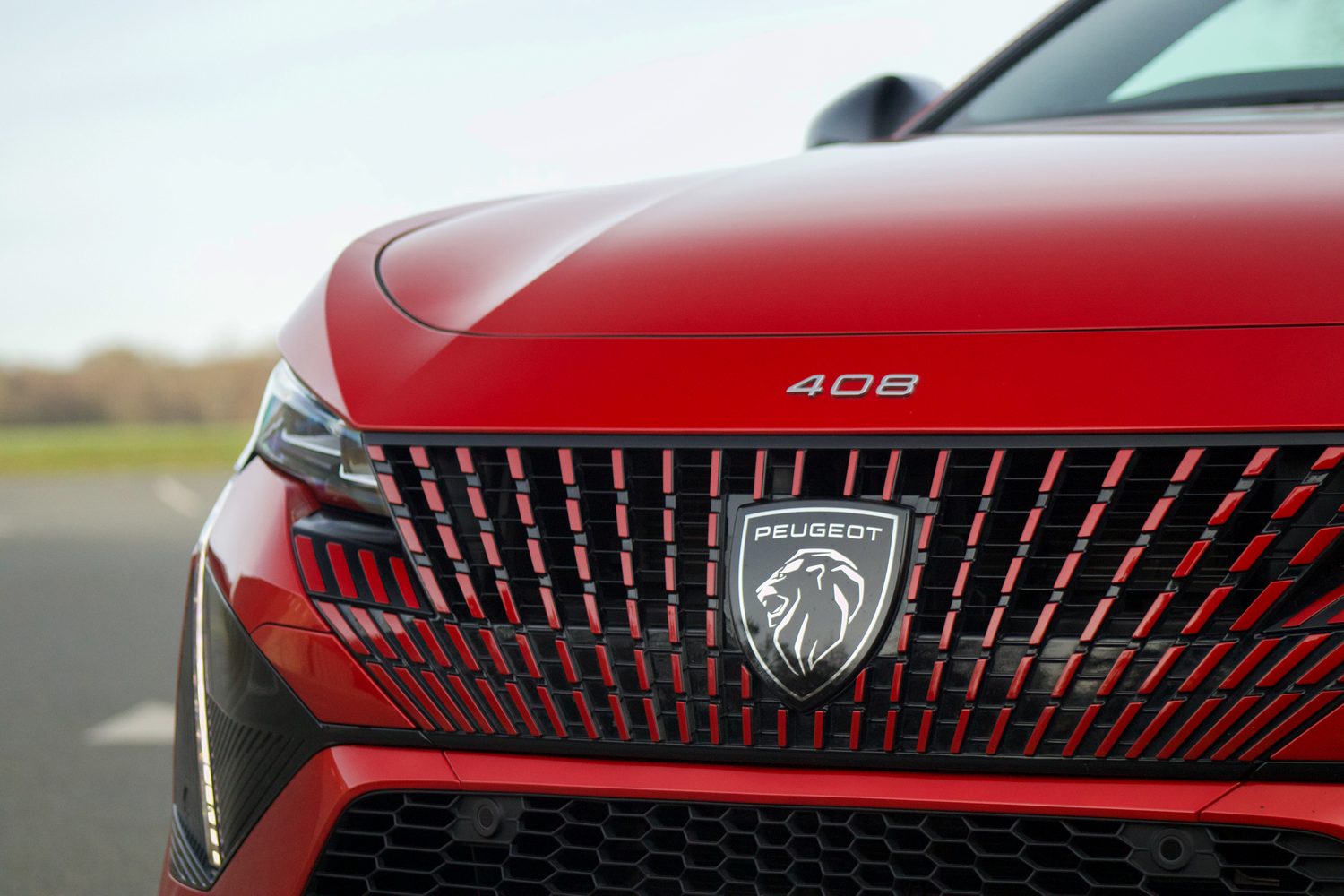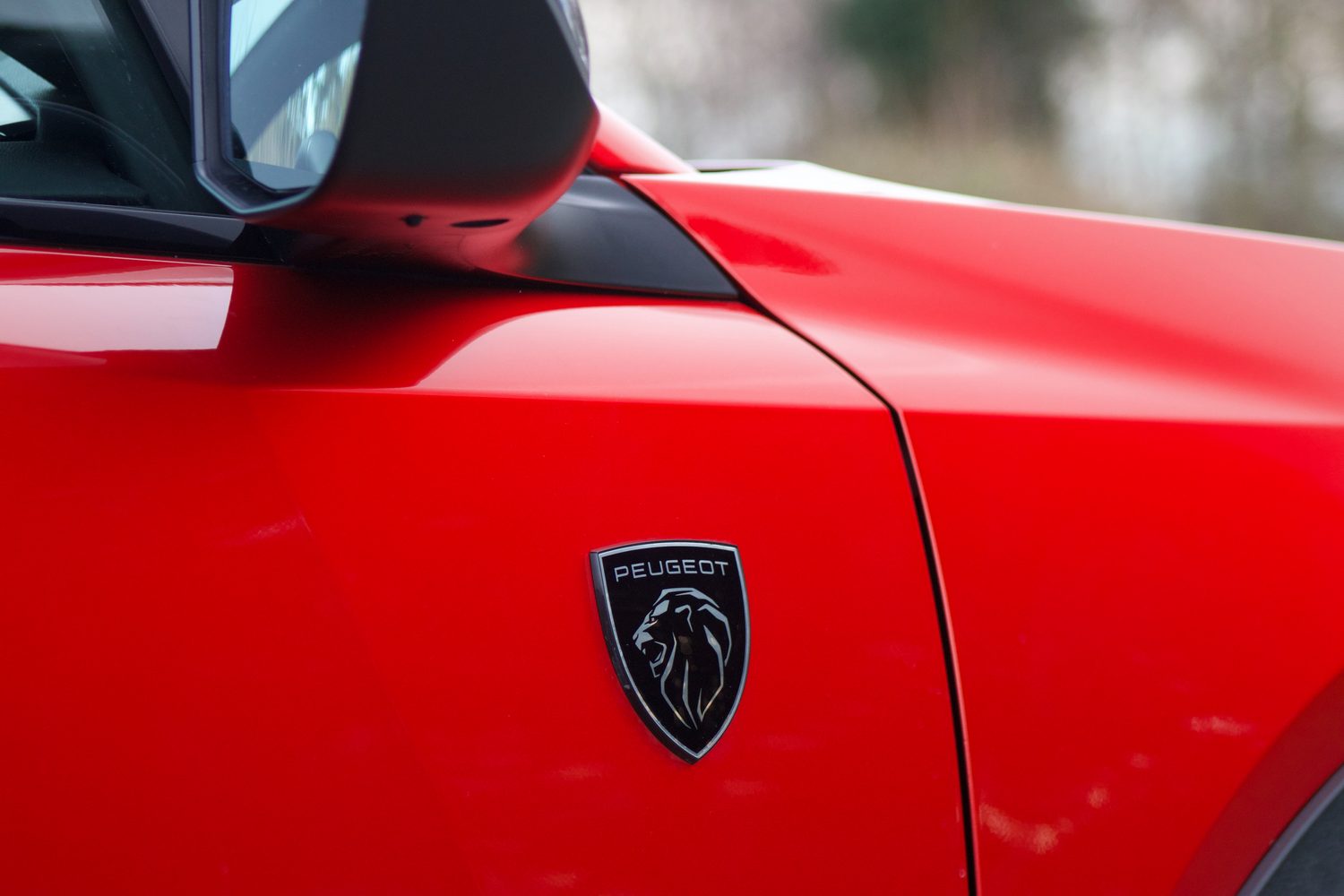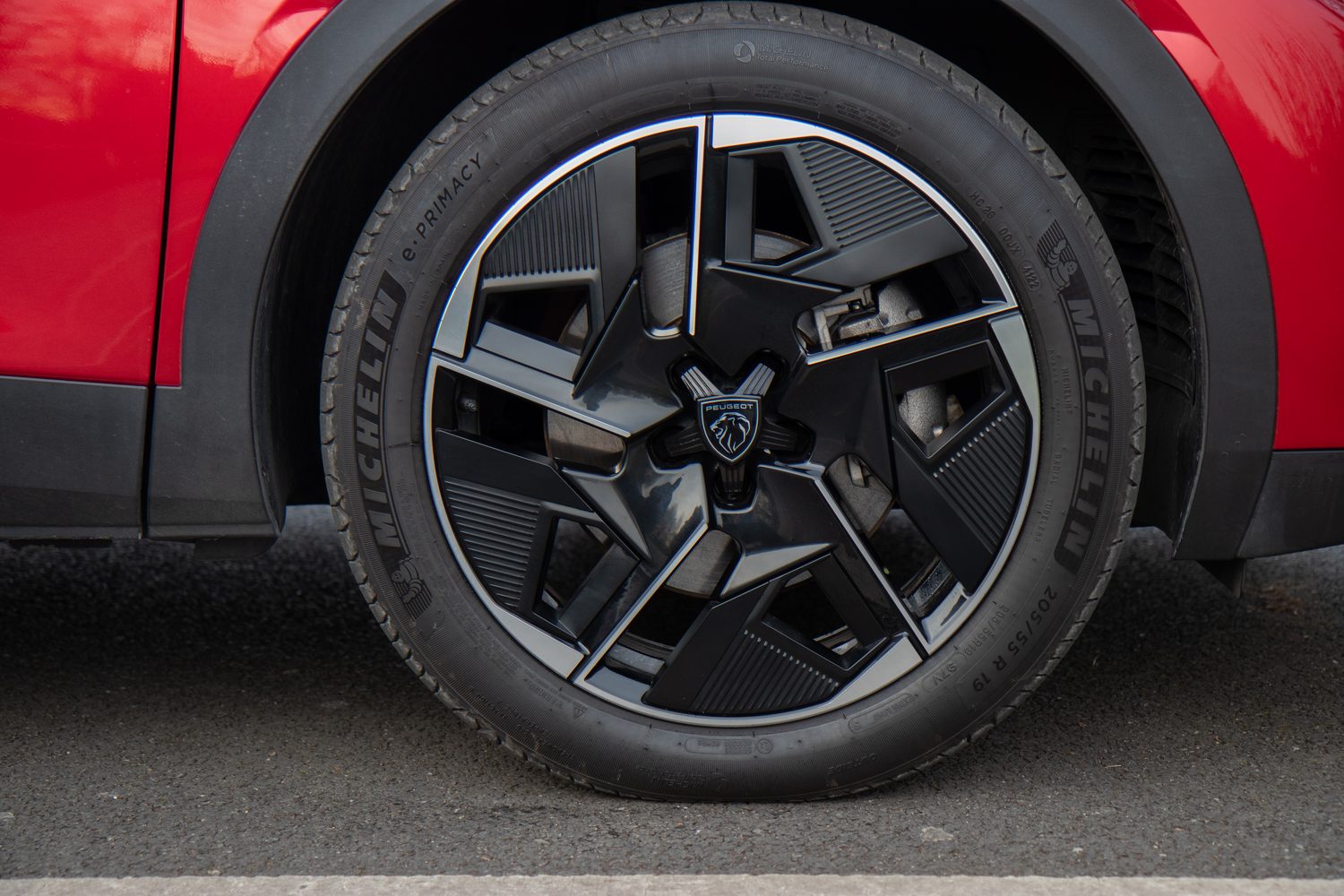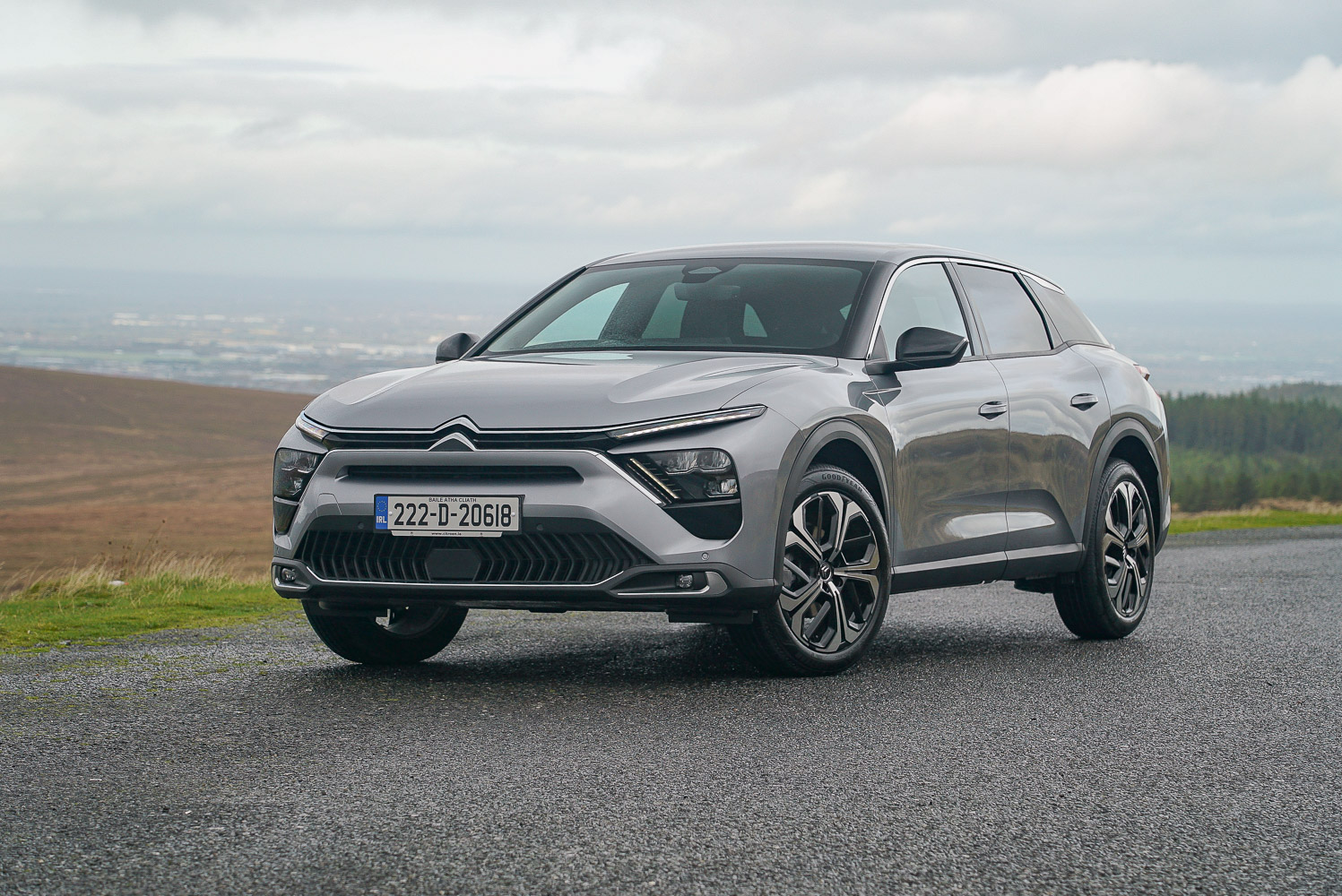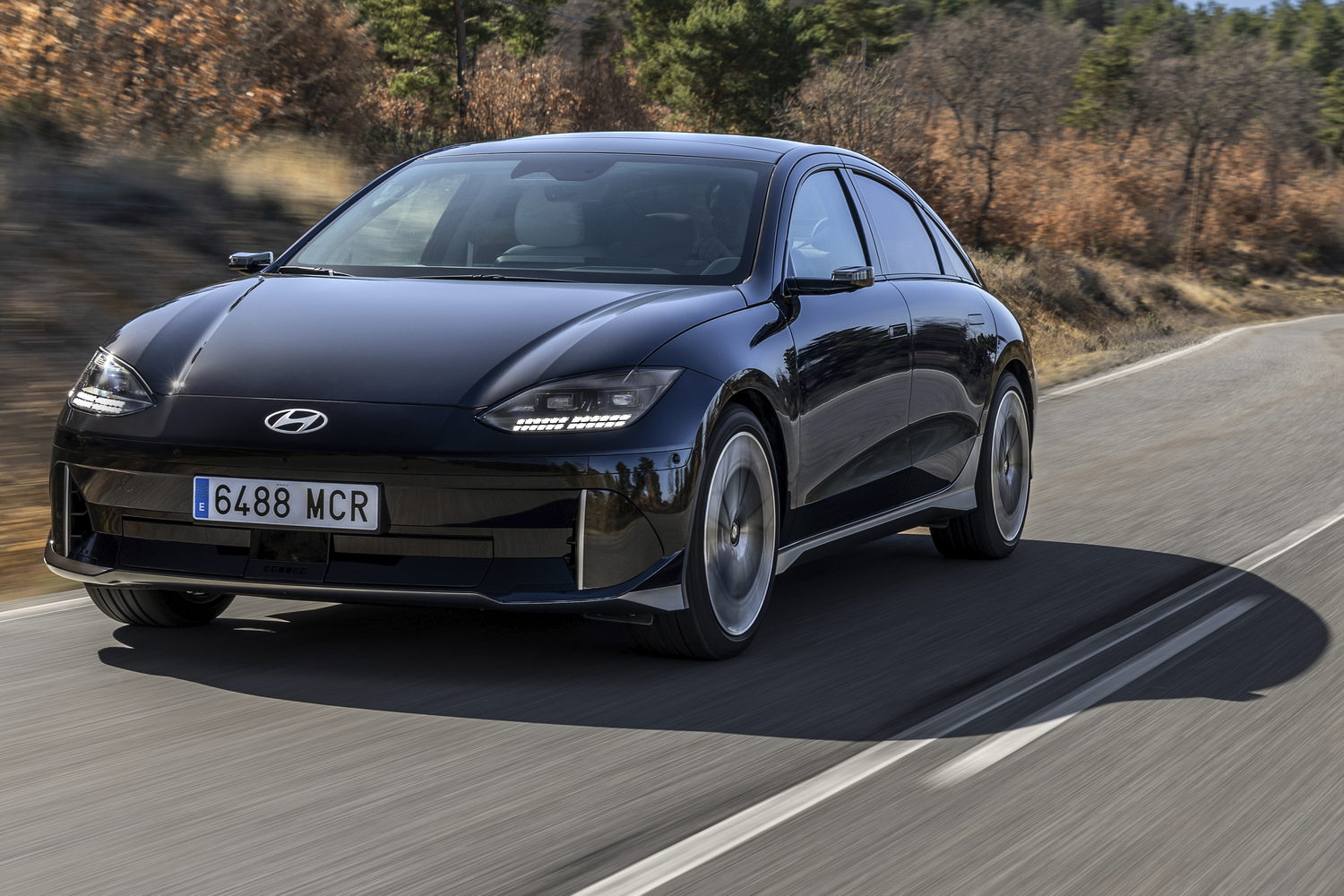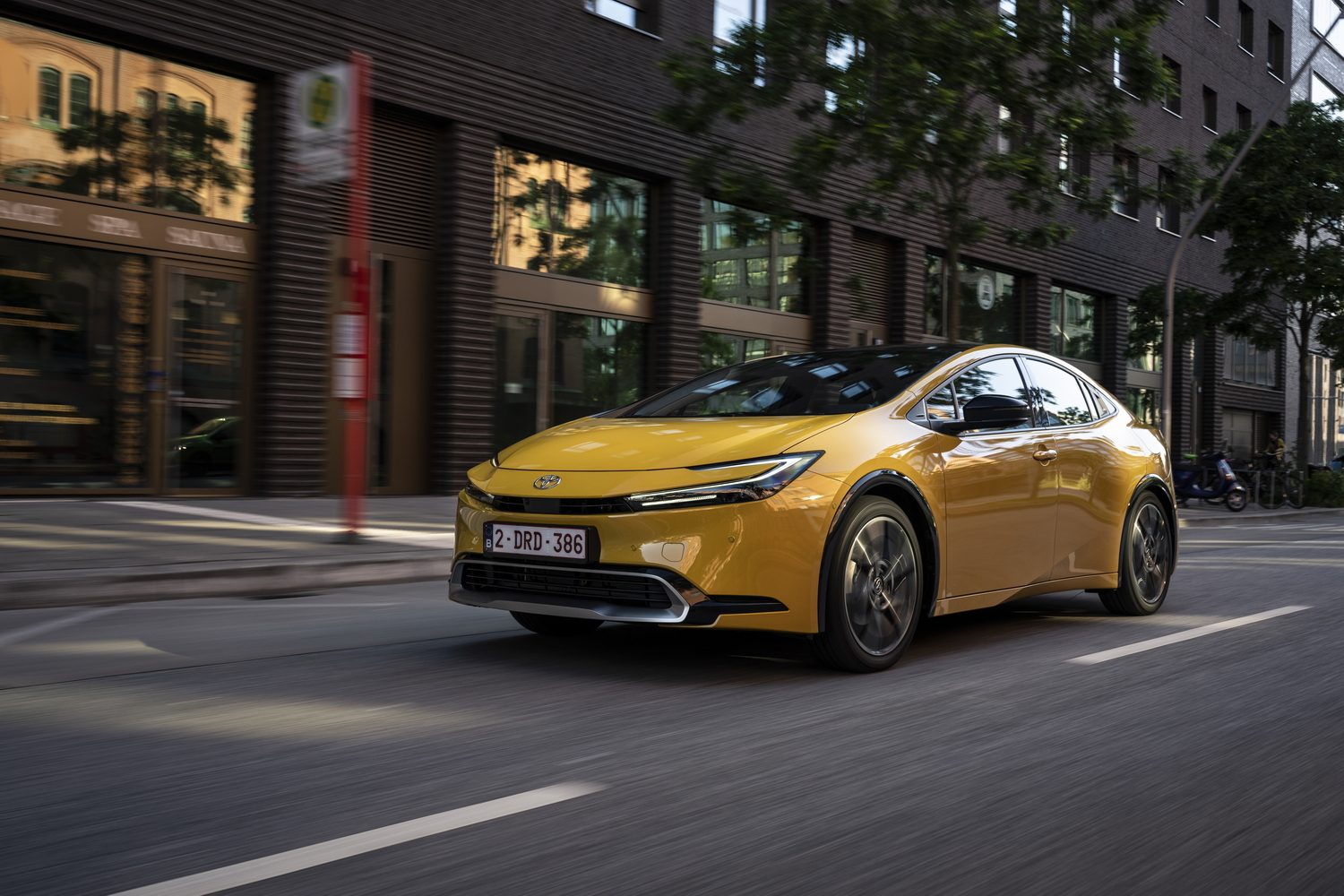Peugeot 408 range overview
Much like the great Orson Welles seemingly could never quite decide whether he was an actor, a director, or a magician - and so simply became an enigma - the Peugeot 408 seems caught between the stools of being a saloon, an estate, or a crossover. It's unquestionably a great looking vehicle (especially in the optional Elixir Red paint of our test car) although you could accuse it of being over-cooked in the styling department. There was not an angle nor accent line left un-used in the Peugeot design office that day, and the jutting rear bumper almost gives the 408 the look of one of those 1970s American-market cars which have been fitted with a distended '5mph' safety bumper - which we like.
Even so, it's unquestionably striking, and the combination of elevated ground clearance and low roofline creates a tempting new paradigm for the SUV genre - it's chunky and rough-road capable, but still manages to be low-slung and aerodynamically efficient.
This is the plug-in hybrid version. We've previously assessed the 1.2-litre three-cylinder petrol model, with its 130hp output, and found it to be surprisingly engaging. Does this 1.6-litre turbo with its battery assistance and official all-electric range of up to 64km improve on that?
The Peugeot 408 model range
Peugeot has kept the 408 lineup pleasingly simple. You just pick from two trim levels - Allure and GT - and three different engine options.
The base model, as mentioned, comes with three-cylinder turbocharged petrol power, featuring a 1.2-litre 130hp 'PureTech' engine, and costing €40,495 in Allure spec, or €44,495 in GT spec. Next up the chain is the 180hp plug-in hybrid, which costs €44,495 as an Allure model, or €48,995 as a GT. Finally, there is our test car - the range-topping 225hp plug-in hybrid, which comes only in GT spec and which costs €50,595. CO2 emissions run from as low as 26g/km for the PHEV models to 136g/km for the 1.2 petrol. Later this year, the 408 range will start to expand a little with a new 1.2 hybrid and a fully electric E-408, but we don't yet have technical details for those versions. All models currently come with the same eight-speed automatic gearbox.
Standard specification for Allure versions includes dual-zone air conditioning, hands-free entry and start, an acoustic laminated windscreen, a ten-inch digital instrument screen, reversing camera (which gets its own washing system), 19-inch alloy wheels, soft textile trim on the dashboard, sports seats, a leather wrapped steering wheel, selectable driving modes, a ten-inch infotainment touchscreen with customisable shortcut buttons, wireless Apple CarPlay and Android Auto, and a six-speaker audio system. Plug-in hybrids come with additional equipment which includes adaptive cruise control, upgraded active safety braking, extended traffic sign recognition and battery-specific bits such as a selectable electric-only driving mode and battery conditioning functions.
GT models get a specific grille style in body colour, special badging including Peugeot's new 'shield' badge on the front wheelarches, Matrix LED headlights, '3-claw' LED brake lights, a frameless rearview mirror, aluminium foot rest, Alcantara upholstery, air quality sensor and a clean air function, along with a sports pack which includes some artificial engine noise generation, a hands-free powered tailgate, heated steering wheel, adaptive cruise control with stop-and-go function, 3D digital instruments, wireless phone charging and natural language voice recognition.
All 408s come with camera-based active front safety and autonomous braking, automatic high beam headlights, active lane departure warning and rear parking sensors. Evaluated by EuroNCAP in 2022, the 408 received four stars out of five, with a 76 per cent score for adult occupant protection, 84 per cent for child occupants and 78 per cent for vulnerable road user protection.
The Peugeot 408 GT 225 interior
The 408 shares a chassis and mechanical package with the slightly smaller 308 hatchback and SW estate, so most of the interior is carried over. That, let's be clear, is no bad thing because this is one of the more interesting automotive interiors. It starts with Peugeot's now-traditional small-wheel, high-dials layout with which not everyone will get along, but which I quite like. The dinky hexagonal steering wheel can sit almost in your lap (depending on your size and driving position adjustments), but feels pleasantly tactile to hold and, as we shall see, has an influence on how the car drives. Up high are the '3D' digital instruments, which are constructed from two superimposed TFT screen layers giving a slight depth effect. You can customise the layout in a limited way, and the display area seems oddly on the small side, but for the most part it's clear and useable.
The infotainment screen in the centre of the dash is more successful. Peugeot's recently updated software is broadly impressive to use, looks smart and only occasionally reveals a fiddly menu layout. Most major functions are easily accessed. The climate controls are on the screen, and even though there are some physical shortcut buttons lower down, we'd prefer not to have to use the display for this. Better are the 'i-Toggles'; this is effectively an extra touchscreen onto which a series of shortcut menu buttons are projected. You can customise these by holding your finger down on one and picking the function you want to keep displayed, and they are helpful when it comes to quickly accessing the menu items you need. Still no substitute for proper physical buttons, but we fear that battle has long since been lost.
On the centre console, there are two cupholders with a spring-loaded hinged cover, a small semi-open storage area and directly under the screen a slim space which in this car houses the mobile phone charging pad. There's a useful storage area under the butterfly armrest, another small open storage box just in front of that, and reasonably spacious door bins. The gear selector is a chunky toggle switch located next to the stop-start button, and the drive mode selector lives next to that, through which, in this model, you can call up an electric-only driving mode, or Sport and Hybrid guises.
In the rest of the cabin there are a lot of shapes and sudden, slashing lines going on, and on this GT model there's contrast stitching in Peugeot Sport's traditional lime green colour so the whole thing coalesces together pleasantly, and the quality of assembly and materials is exceptionally good.
What's most surprising is the space in the back. Despite that combo of high ride height and sloping roof, there's ample head- and legroom, even for a correspondent of my size (Mr Briscoe's wardrobe kindly provided by High, Wide and Chunky of Ormeau Road, Belfast). The boot, at 472 litres, isn't the biggest but it's not bad (and you can have a slightly larger boot by trading down to the 1.2 petrol model).
The Peugeot 408 GT 225 driving experience
I have a nagging suspicion that the more affordable 180hp version of this hybrid system is the best engine option. The two share identical torque figures, and so the times when you're going to feel the benefit of the 225's extra power are minimal. The fact that their 0-100km/h times are separated by a mere 0.3 seconds seems to bear that out.
That said, this is one of the more successful installations of the Stellantis Group's 1.6 plug-in hybrid that we've tried. Of course, the electric range on a full charge is unlikely to be 64km in real-world conditions. In the below-freezing temperatures of our test drive, it fell to more like 35km, but in milder climes you should get 50km unless you're pounding the outside lane of the motorway, which is sufficient for most commuting purposes. On longer journeys, the 408 settled down to around 6.4 litres per 100km, which is OK, and better than we've experienced with other iterations of this hybrid system. Unfortunately, the 408 lacks a fast-charging option, and I lack a home-charging facility, so my opportunity to keep the battery topped up was minimised. I don't doubt that my average economy would have dramatically improved if I'd been able to charge it more.
Find some corners, and the 408 feels initially very enthusiastic. That's because the tiny diameter of the steering wheel imparts some fast early movement to the steering, making the nose dart in towards the apex of a corner with more vim than you might expect. It's a bit of a paper tiger, though, as once you're past that initial bite point, you soon realise that the 408 is safely set up like any other medium-sized family crossover, which is no harm. The 408 feels pleasantly fluid on a twisty road, and enjoyable, but its slightly firm ride quality isn't as relaxing on a long journey as that of the Citroen C5 X, which shares all of the 408's underpinnings, save its suspension.
Our verdict on the Peugeot 408 GT 225
I still can't help but feel that the 408's hybrid system is holding it back, just a little. It works OK, but others still do it better. That said, what Peugeot has done in terms of the 408's style and design is hugely impressive, carving out a genuinely new niche in the crossover market. It's also pleasant to drive and has a terrific interior.
What do the rest of the team think?
The Peugeot 408's genre-blurring design stands out from the crowd and in the right colour it is a real head-turner. Its plug-in hybrid powertrain has just enough battery range to tackle daily driving with minimal engine intervention - provided you're diligent with charging. It would be more useful still if it had a little more electric range of course. In its hybrid mode, performance is decent so long as you don't ask too much from the engine, and the ride comfort is good.
Dave Humphreys - Road Test Editor
Neil hits the nail on the head when he points out that most buyers would be better served by the less-powerful plug-in hybrid version of the 408, though of course only those with home/work charging facilities should even consider buying a PHEV in the first place. That decision aside, the 408 stands out in a good way thanks to its exterior style, meaning buyers can have most of the benefits of a compact SUV without driving a car that looks like one.
Shane O' Donoghue - Editor

